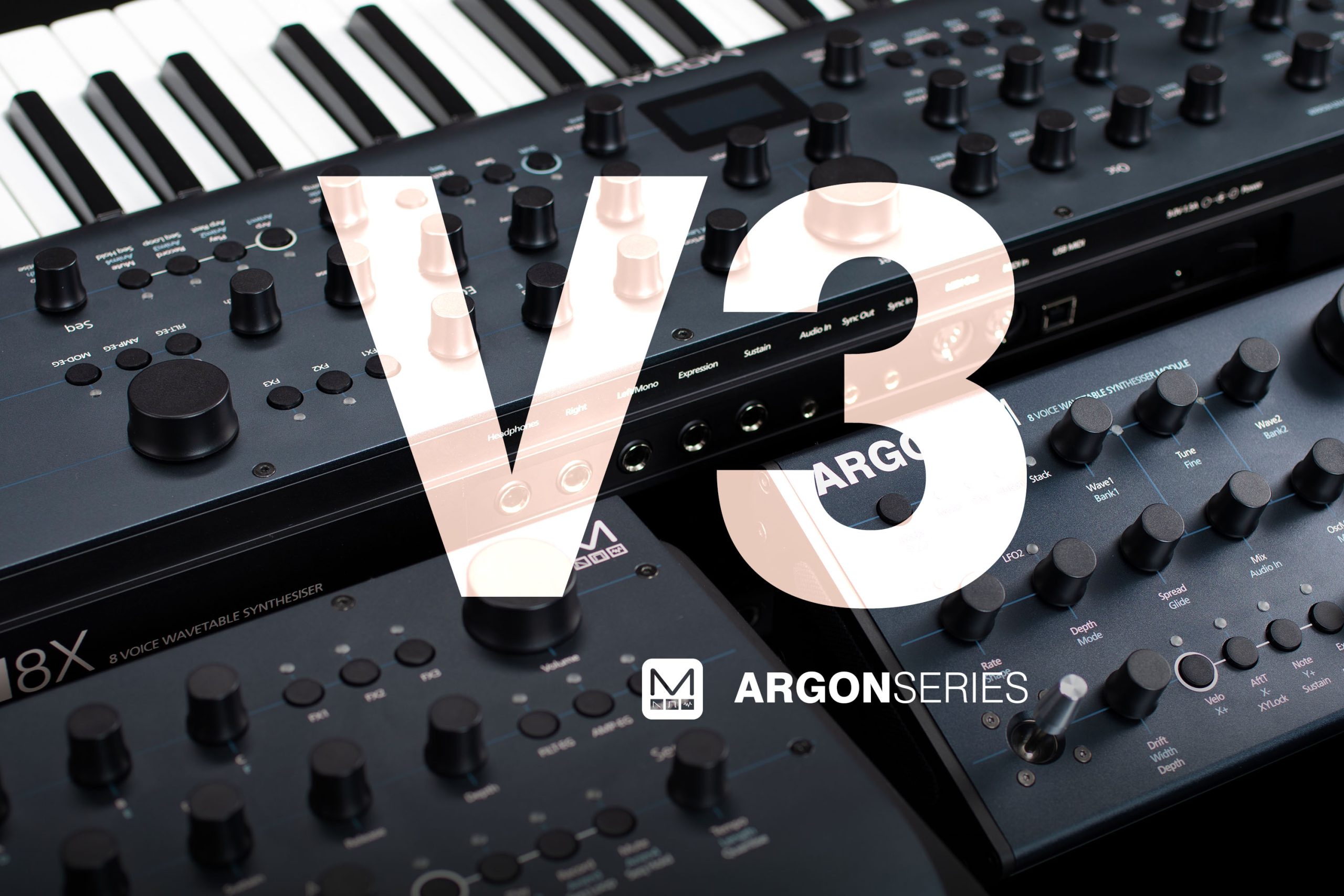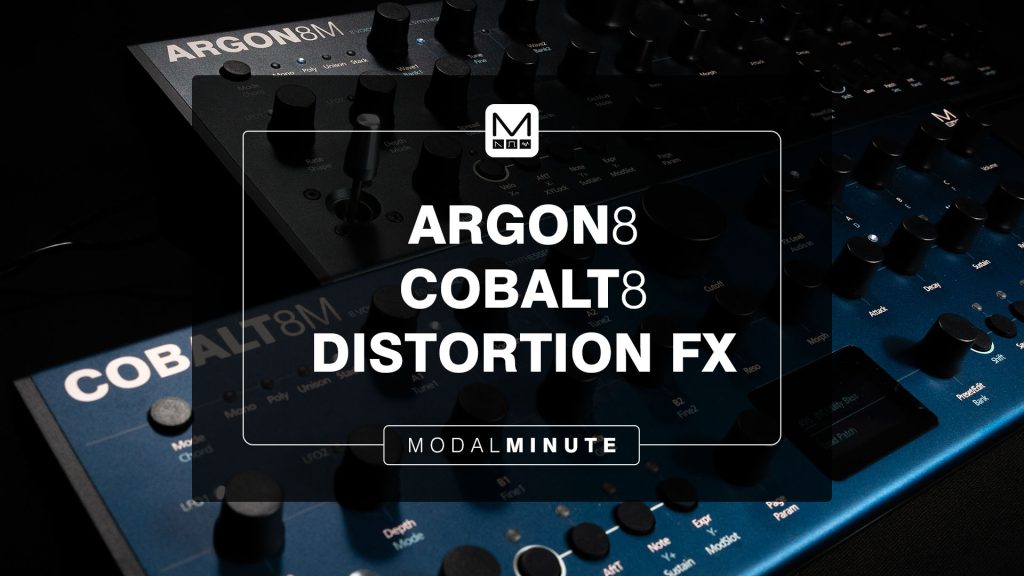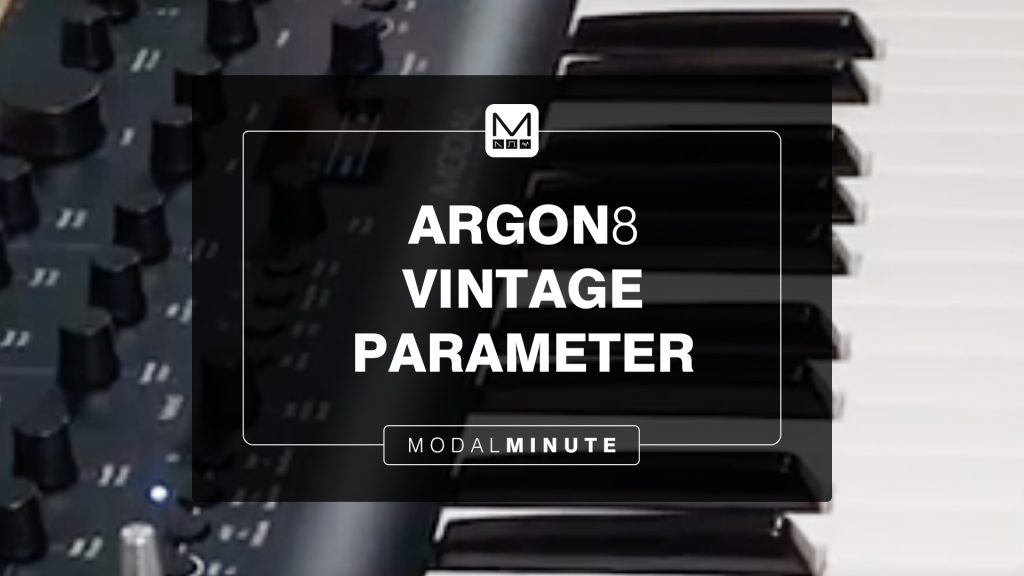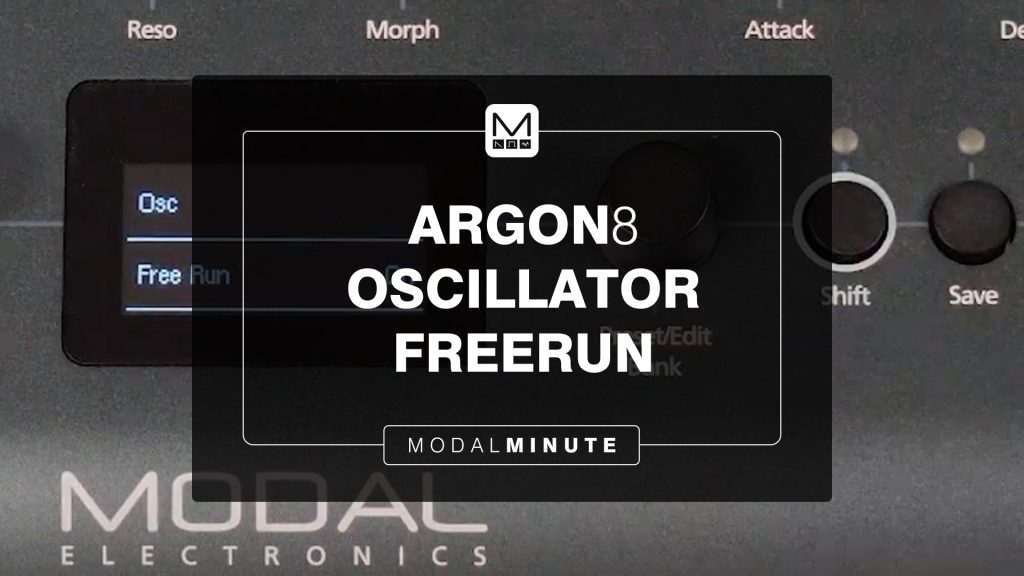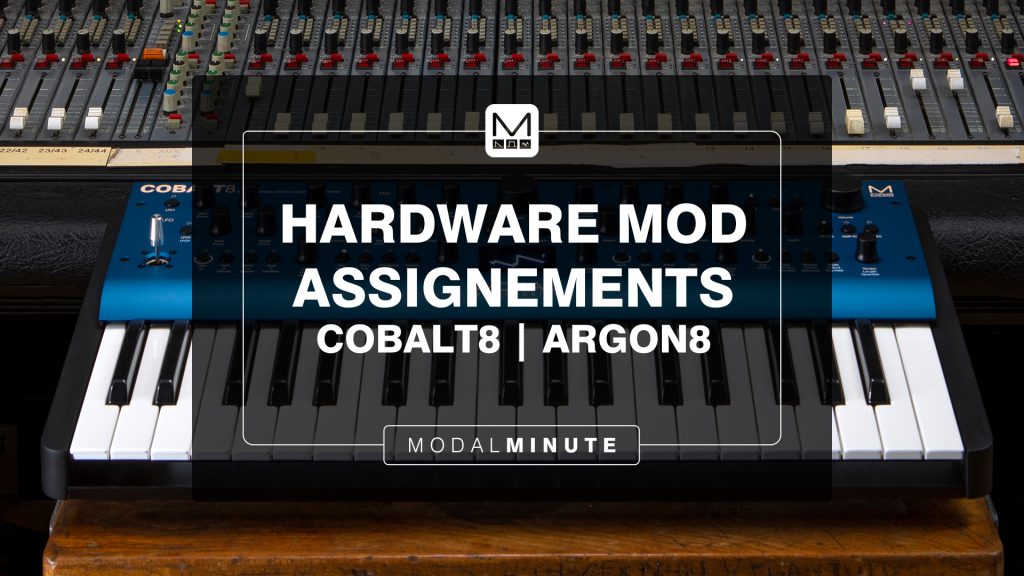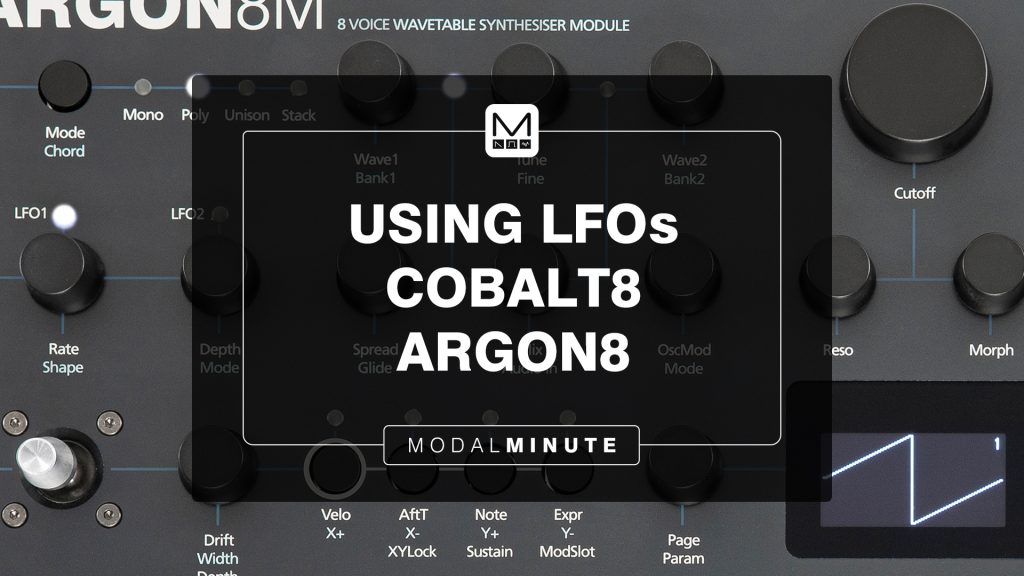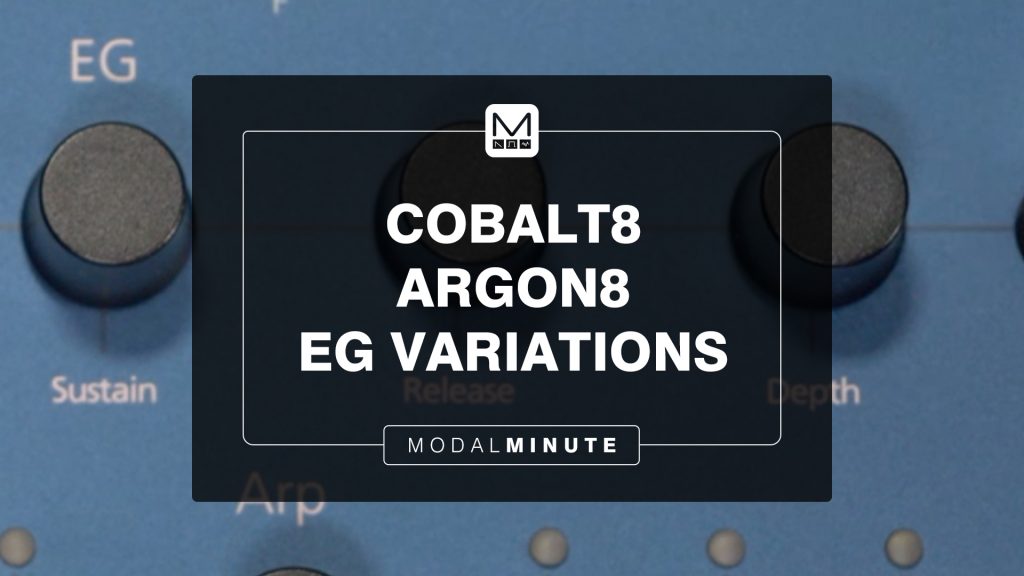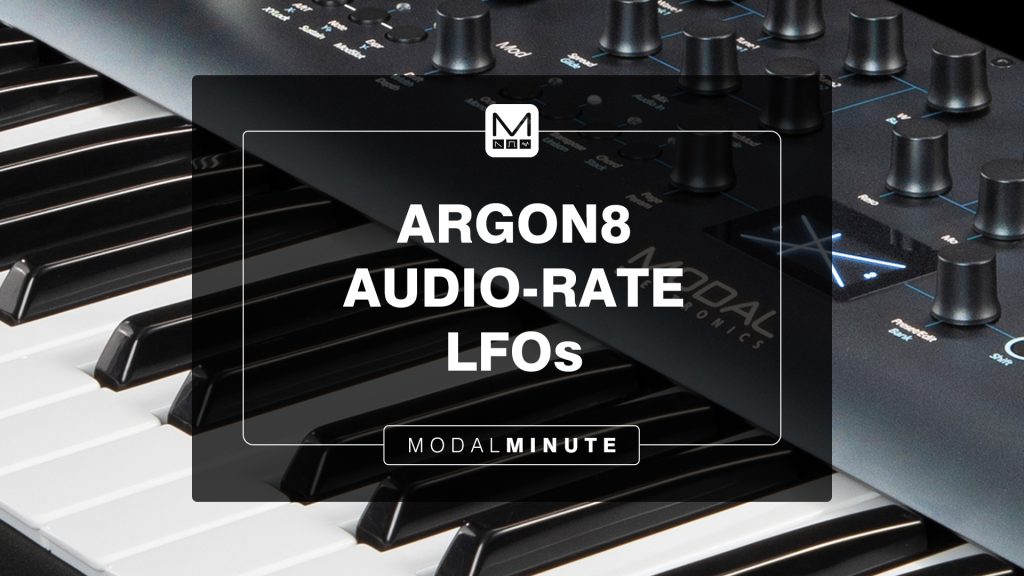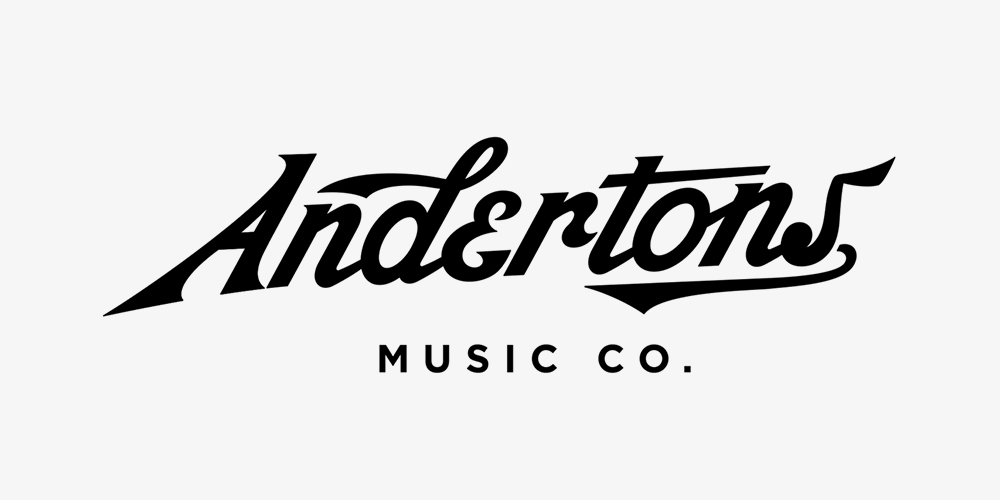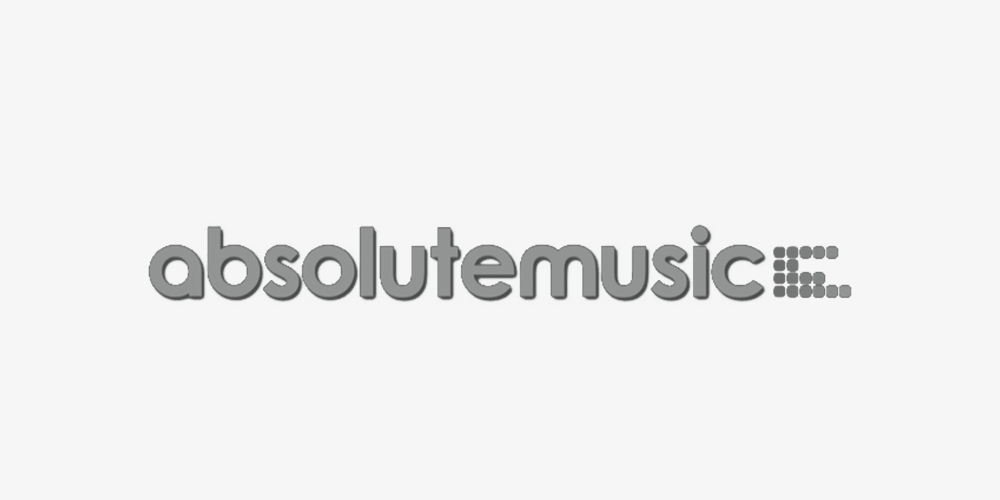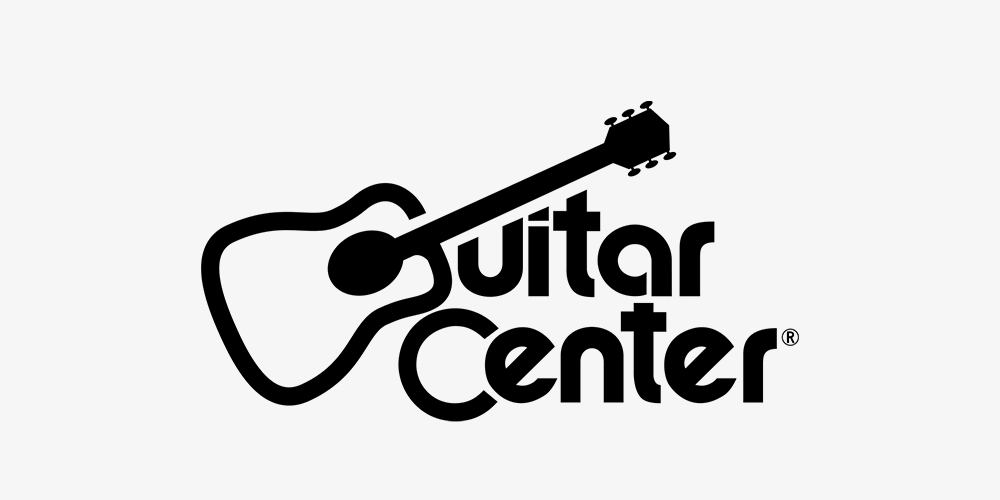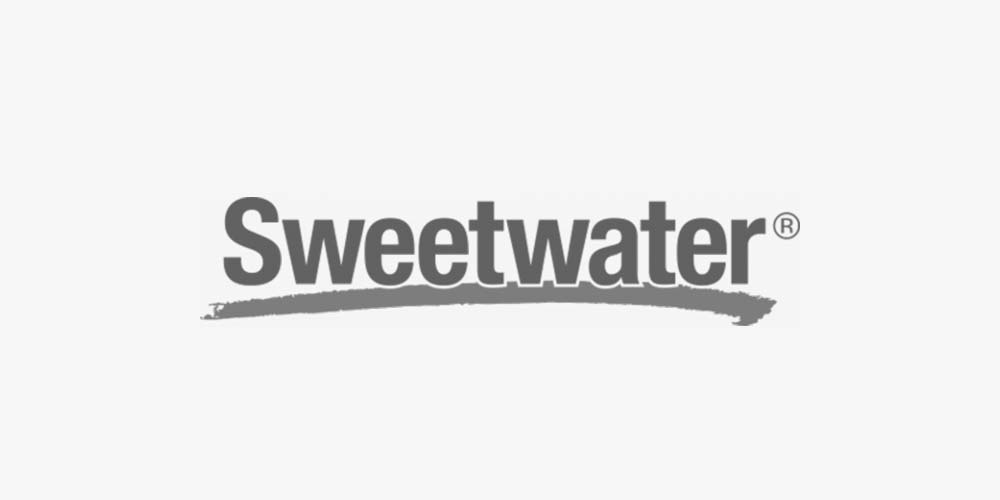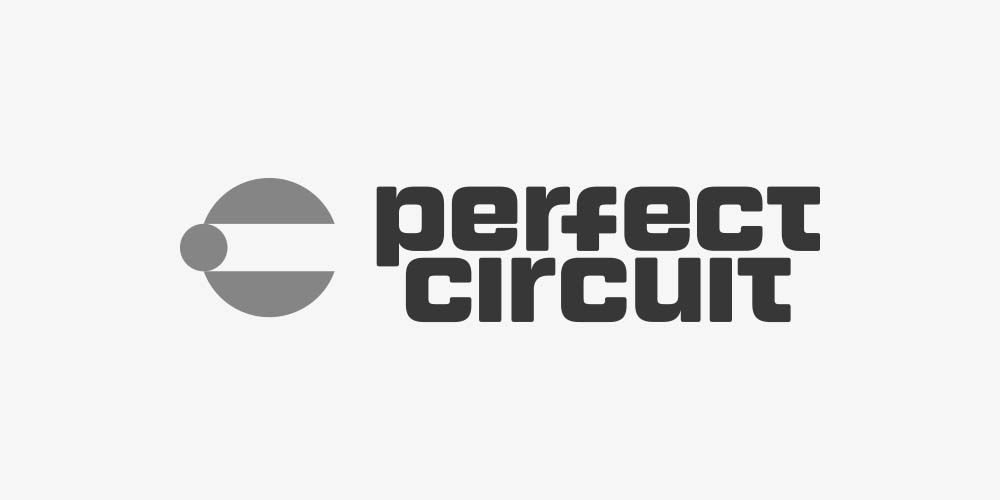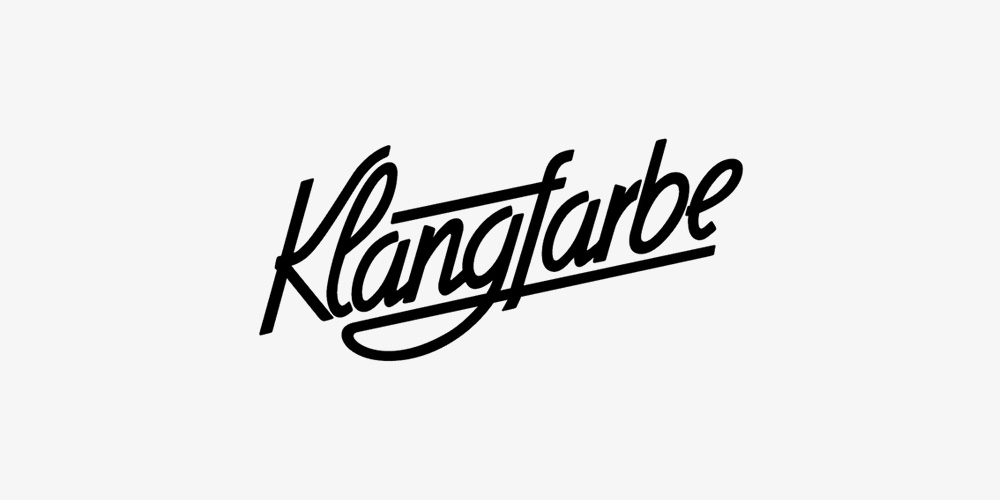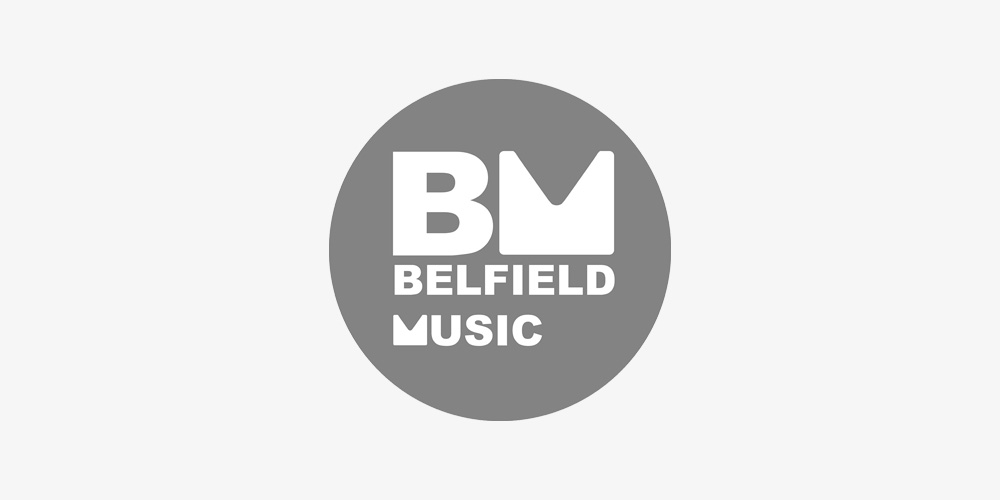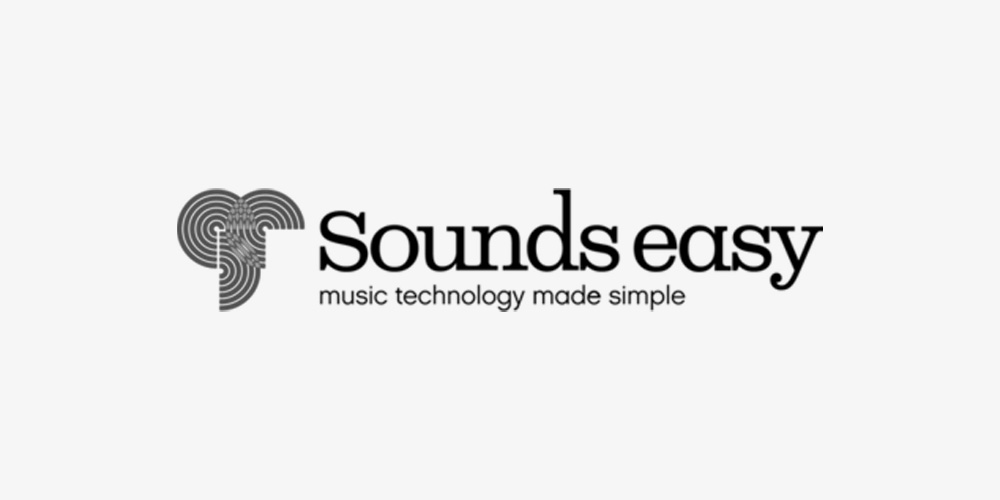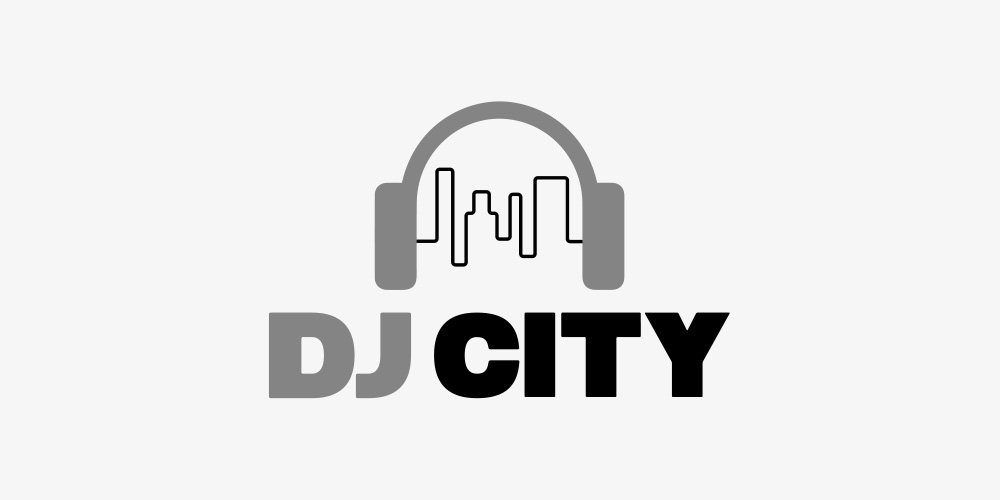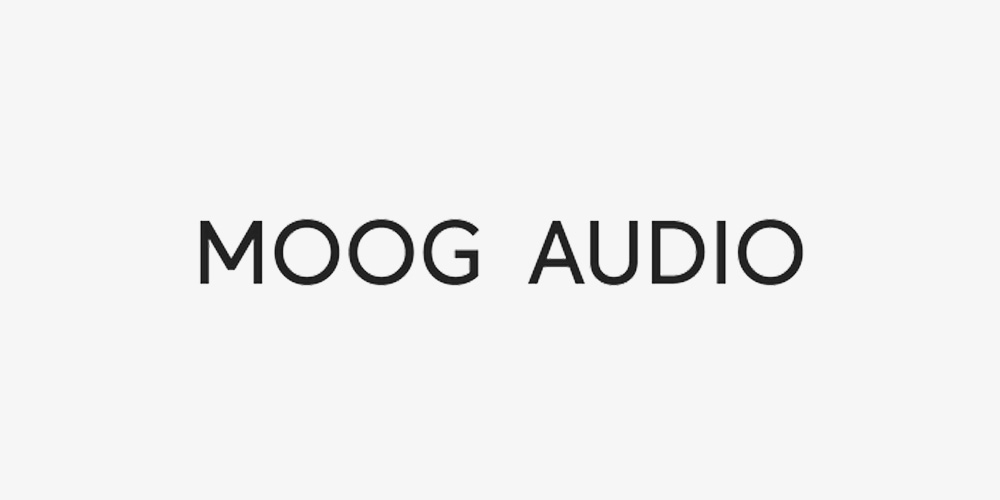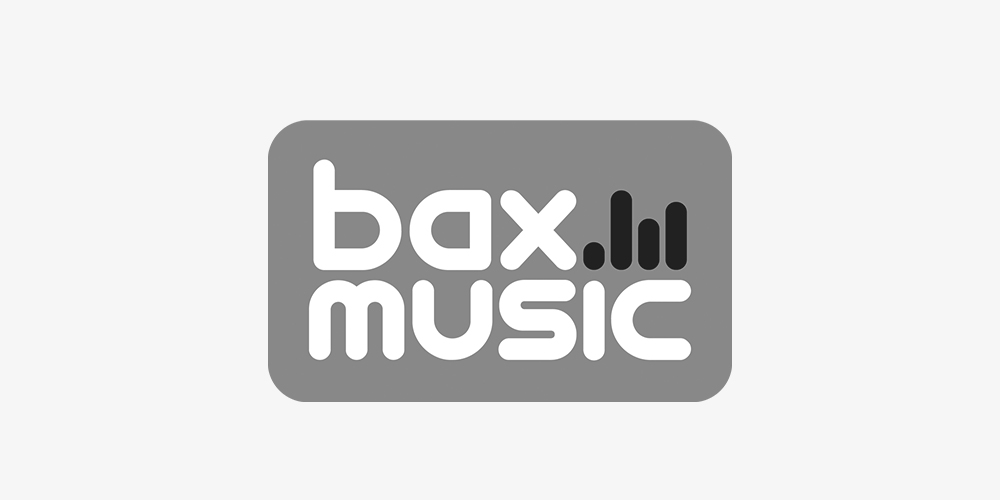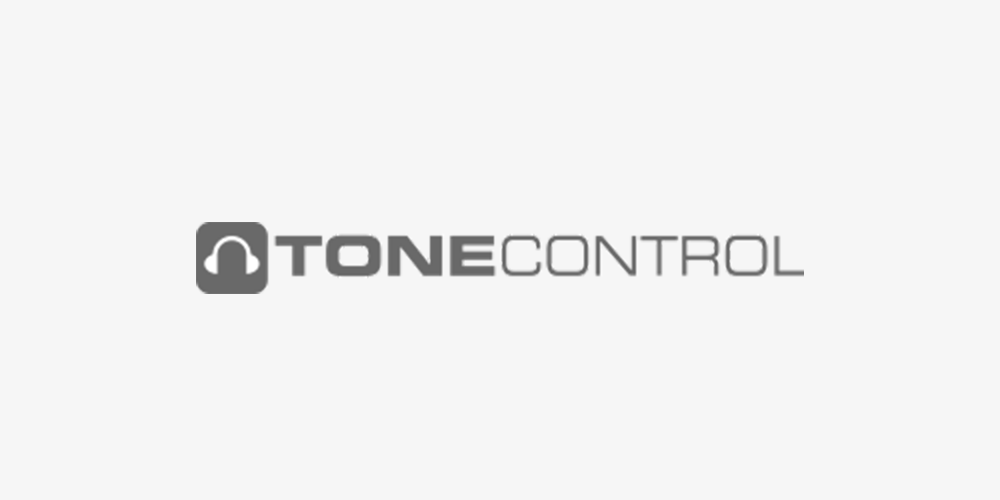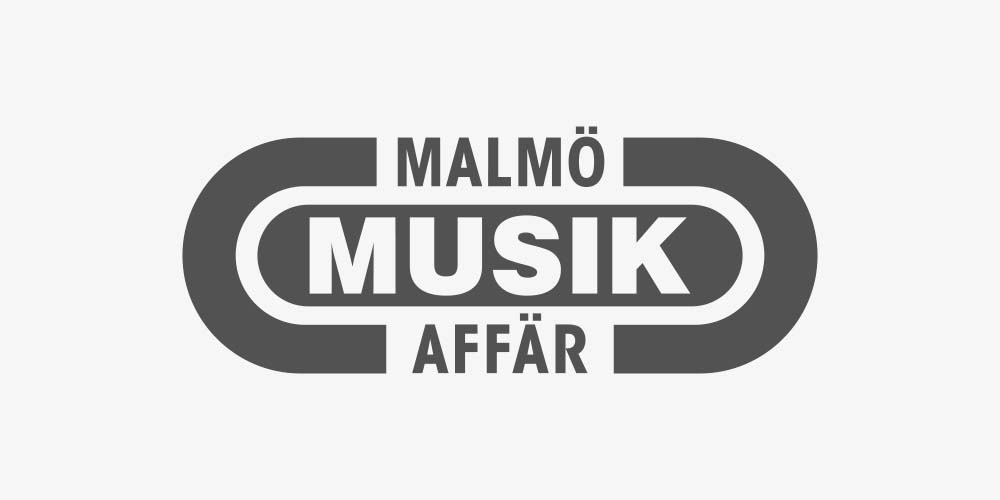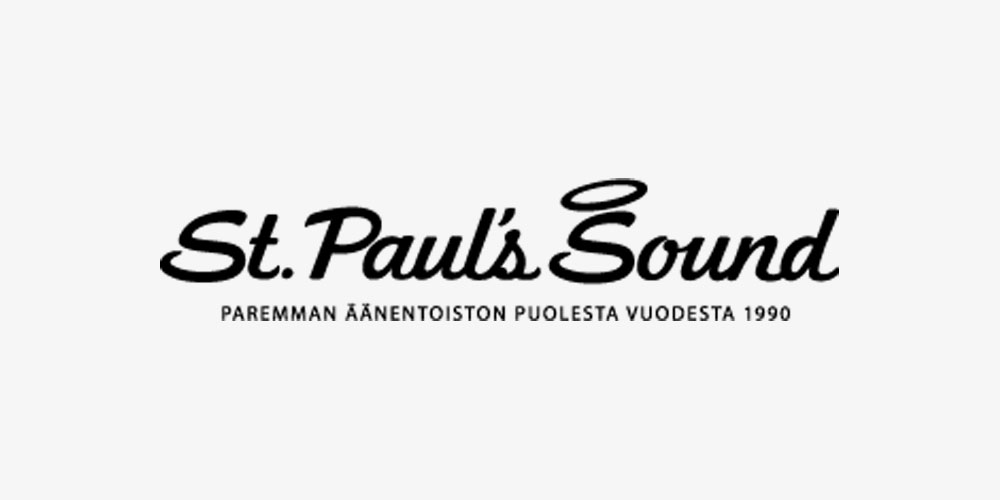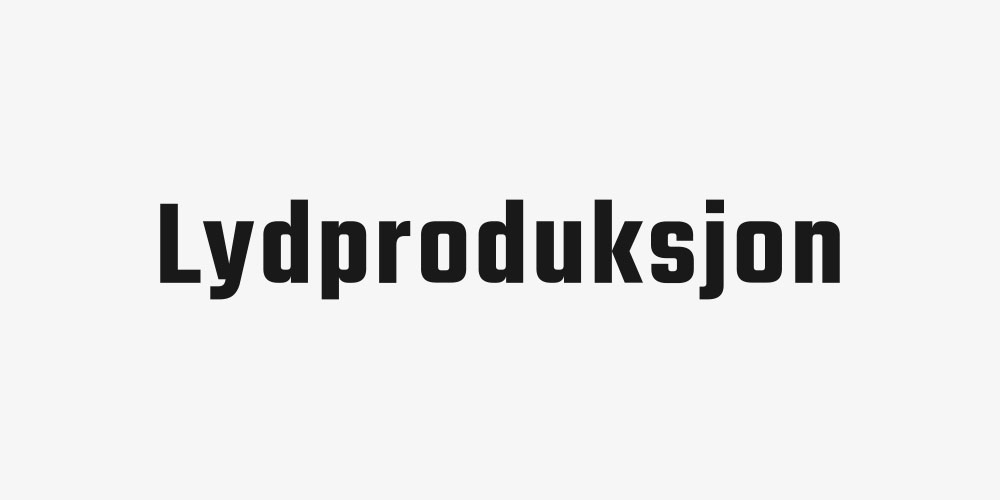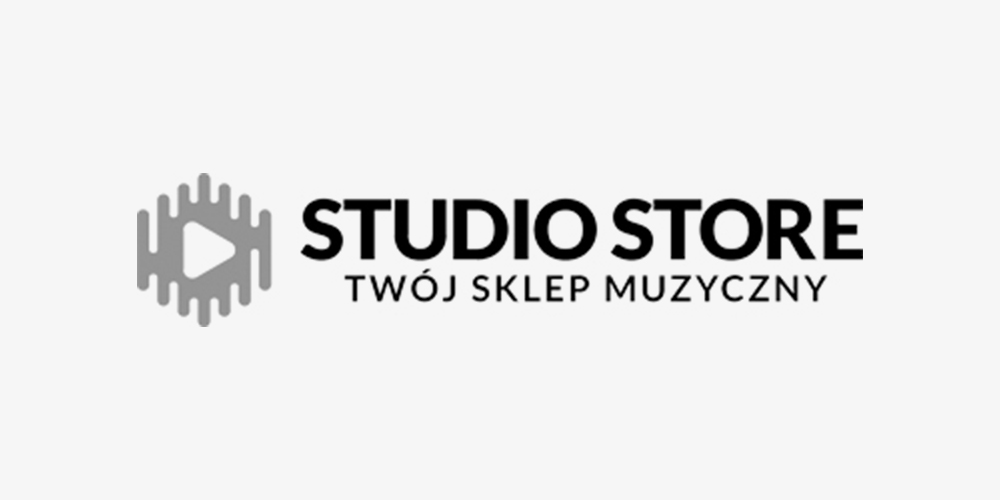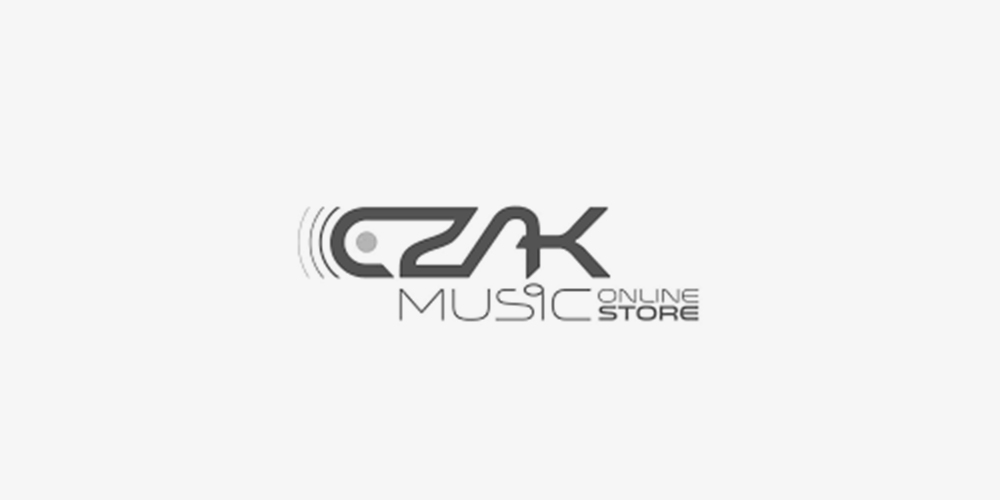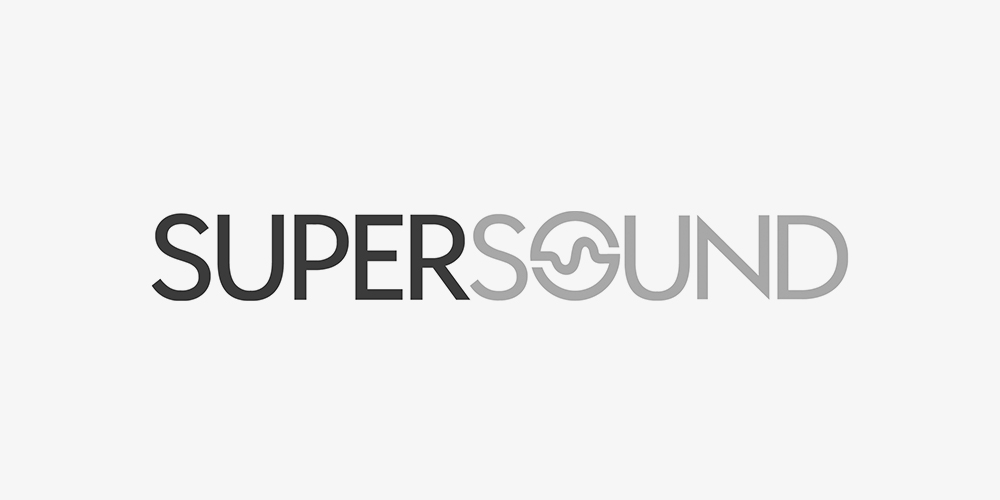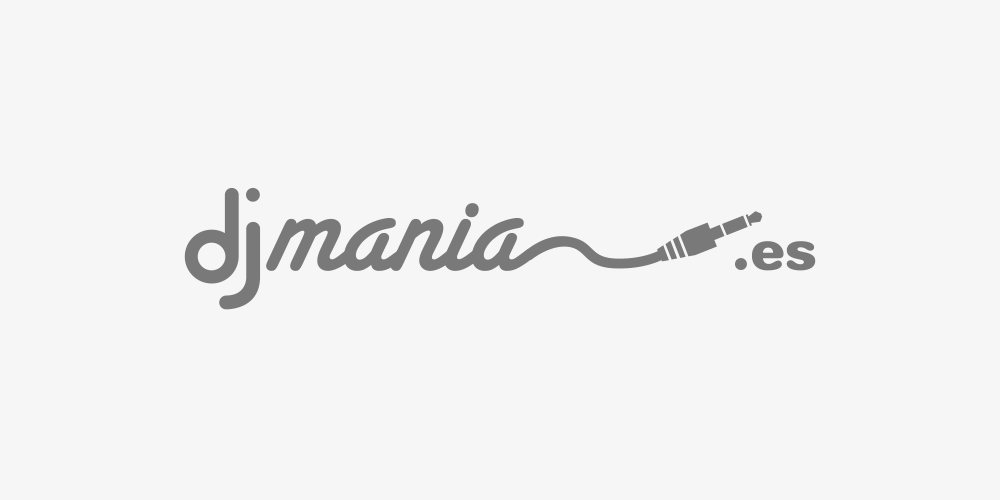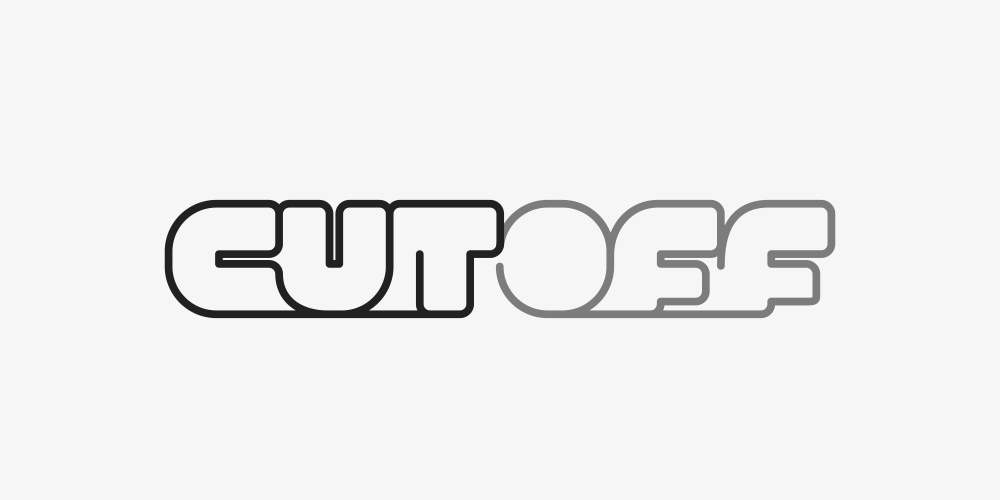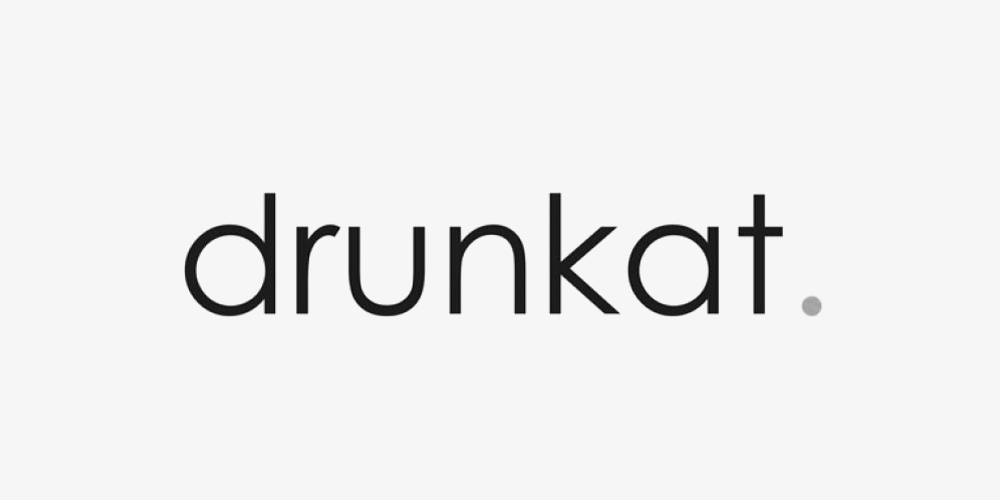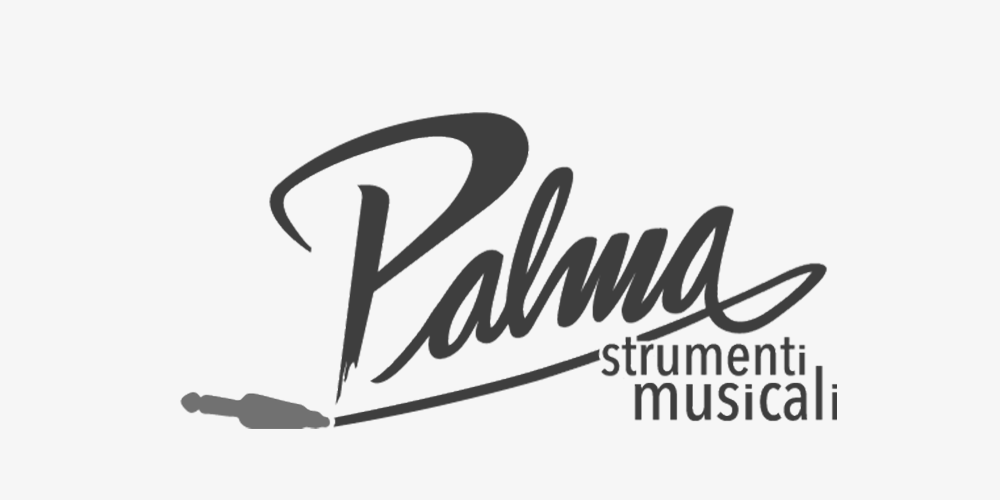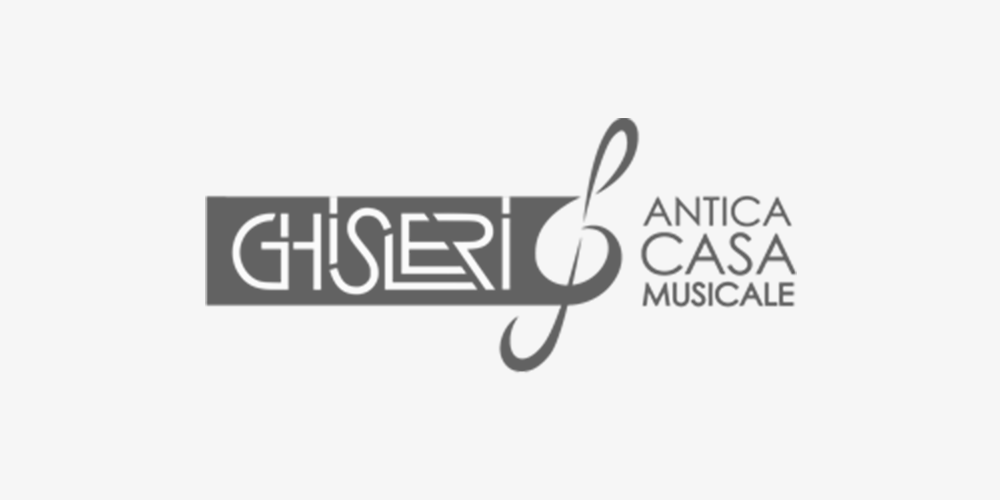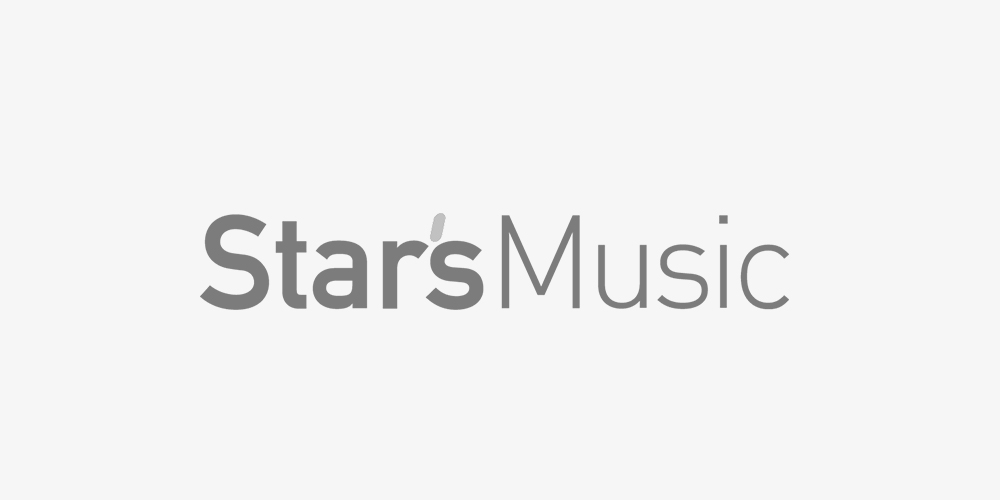Diese Website verwendet Cookies, damit wir dir die bestmögliche Benutzererfahrung bieten können. Cookie-Informationen werden in deinem Browser gespeichert und führen Funktionen aus, wie das Wiedererkennen von dir, wenn du auf unsere Website zurückkehrst, und hilft unserem Team zu verstehen, welche Abschnitte der Website für dich am interessantesten und nützlichsten sind.

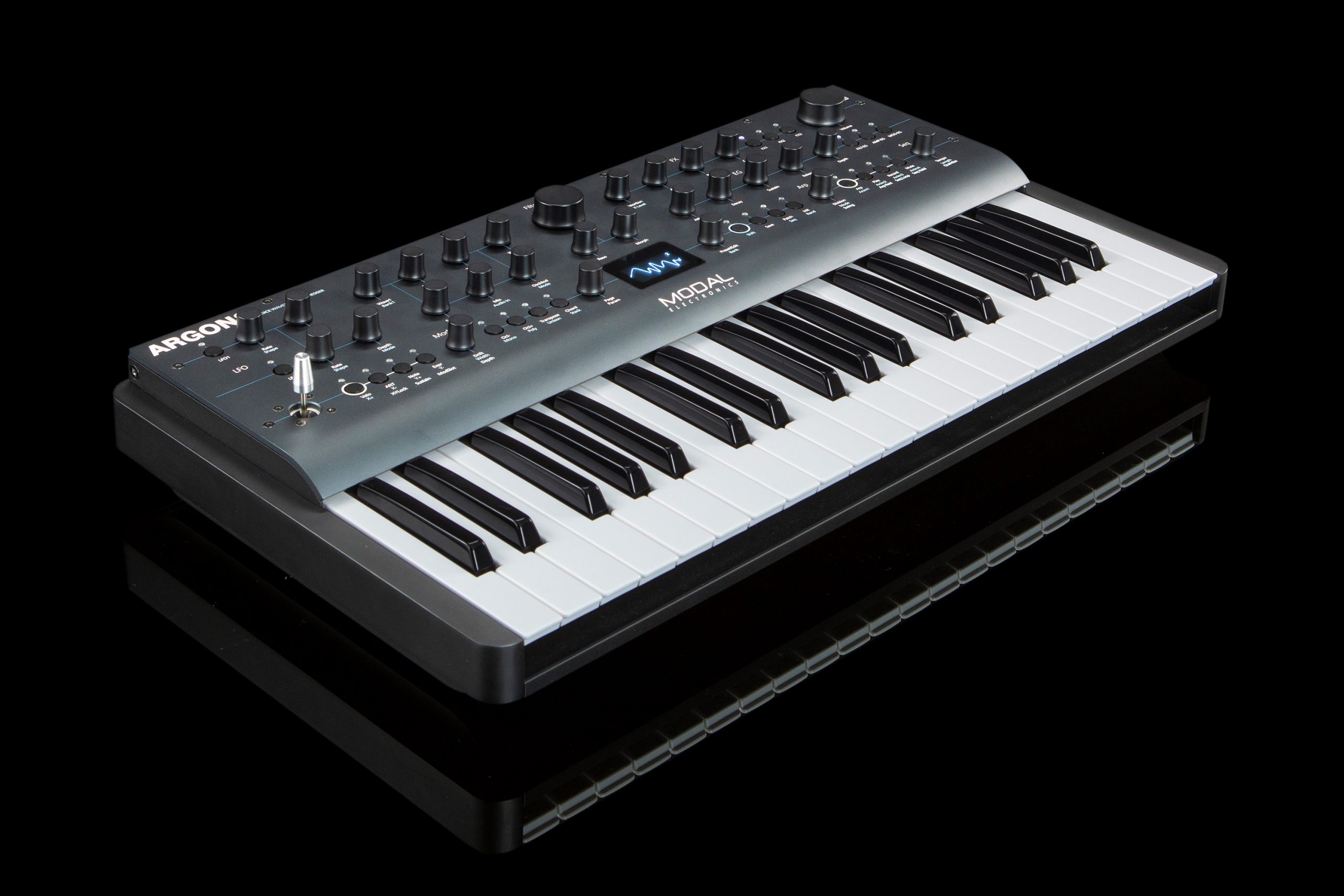
ARGON8
8-stimmiger polyphoner Wavetable-Synthesiser
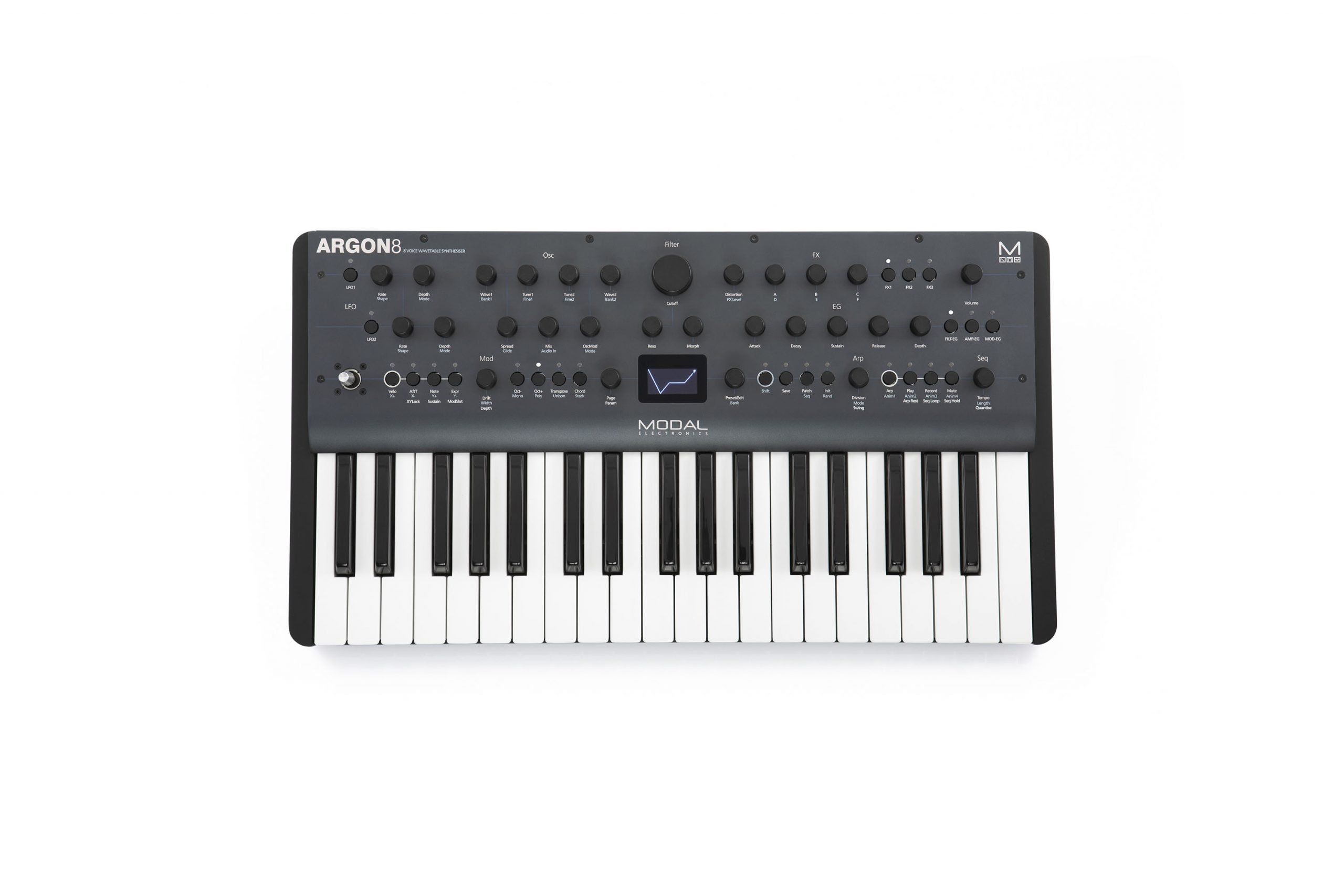
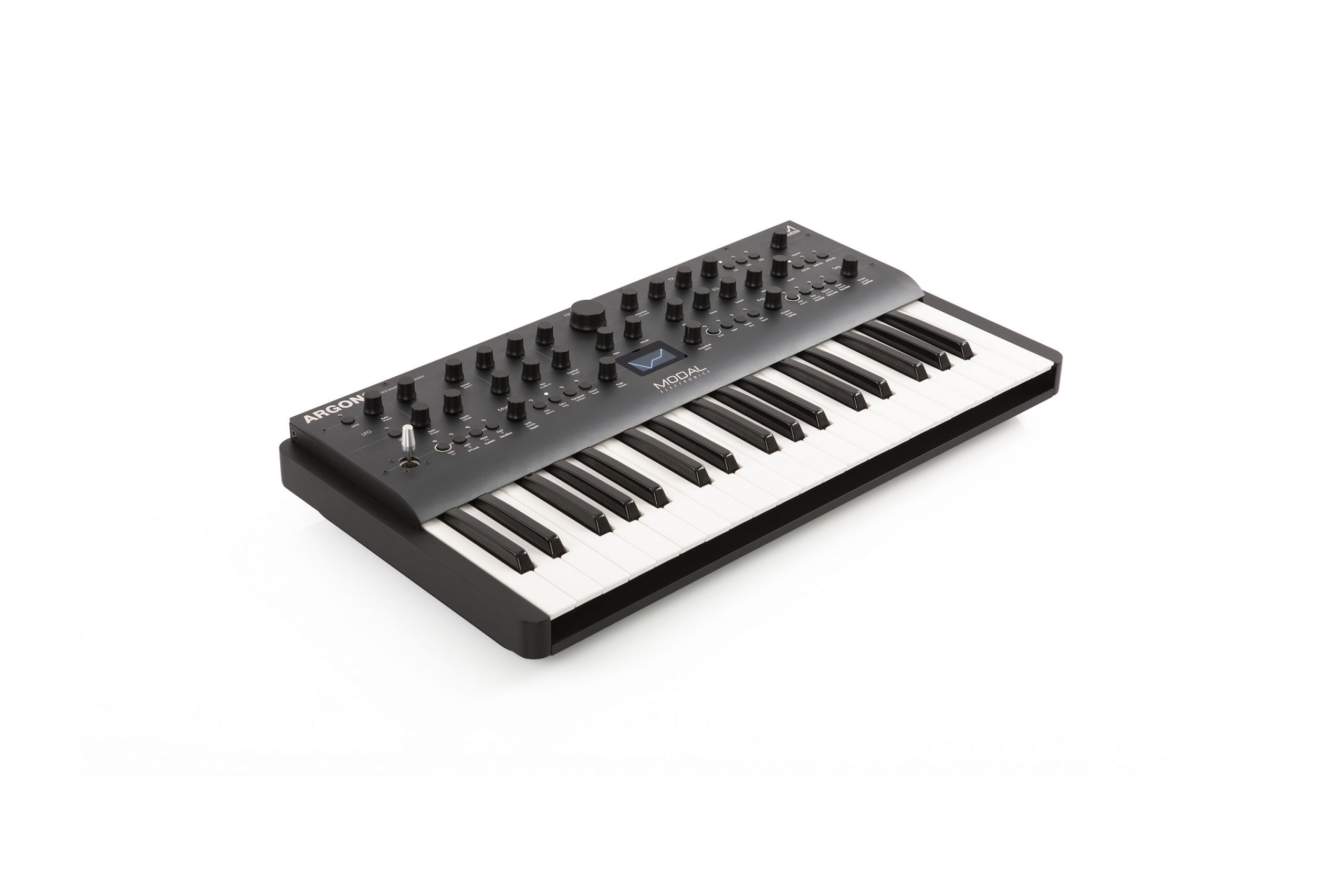
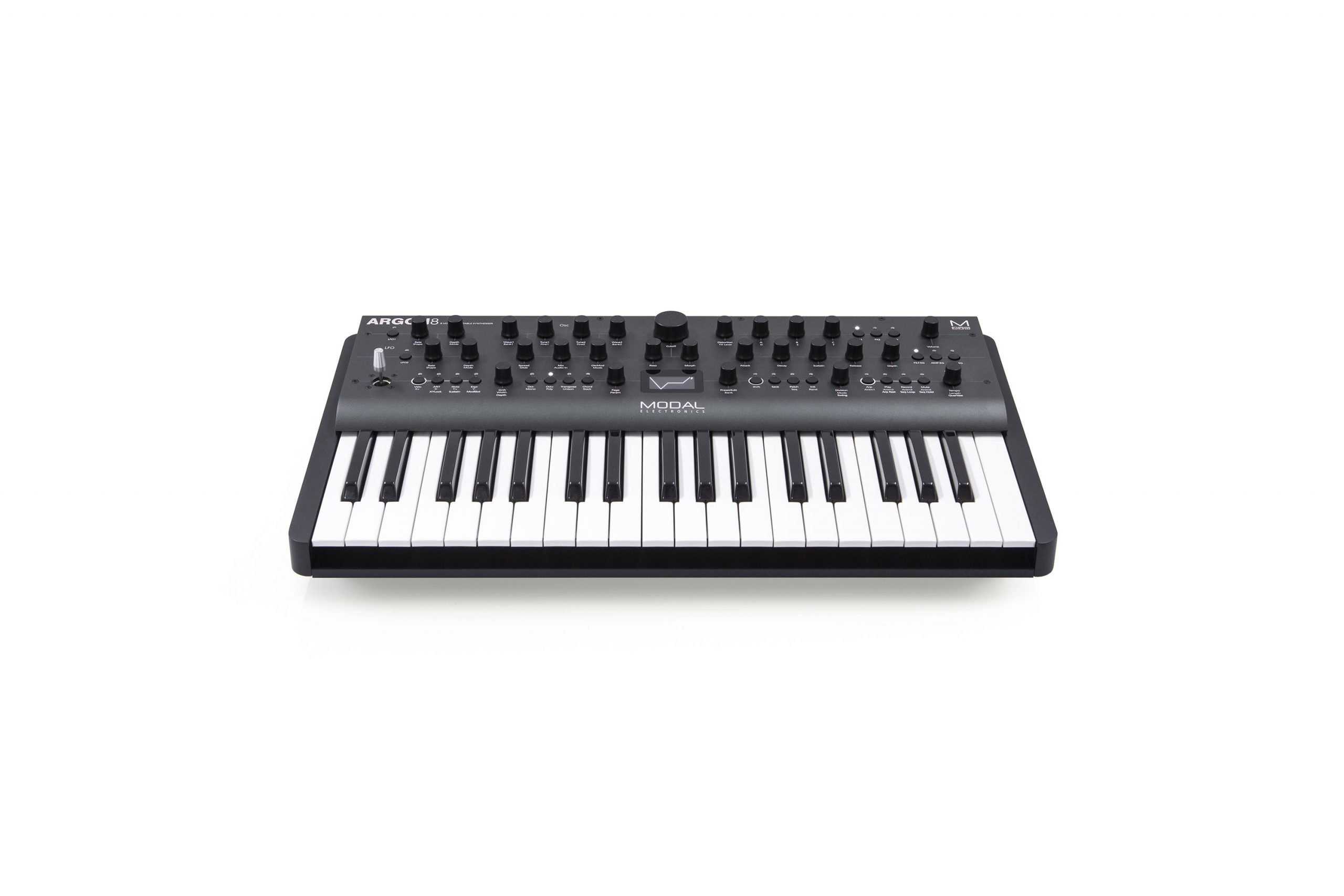
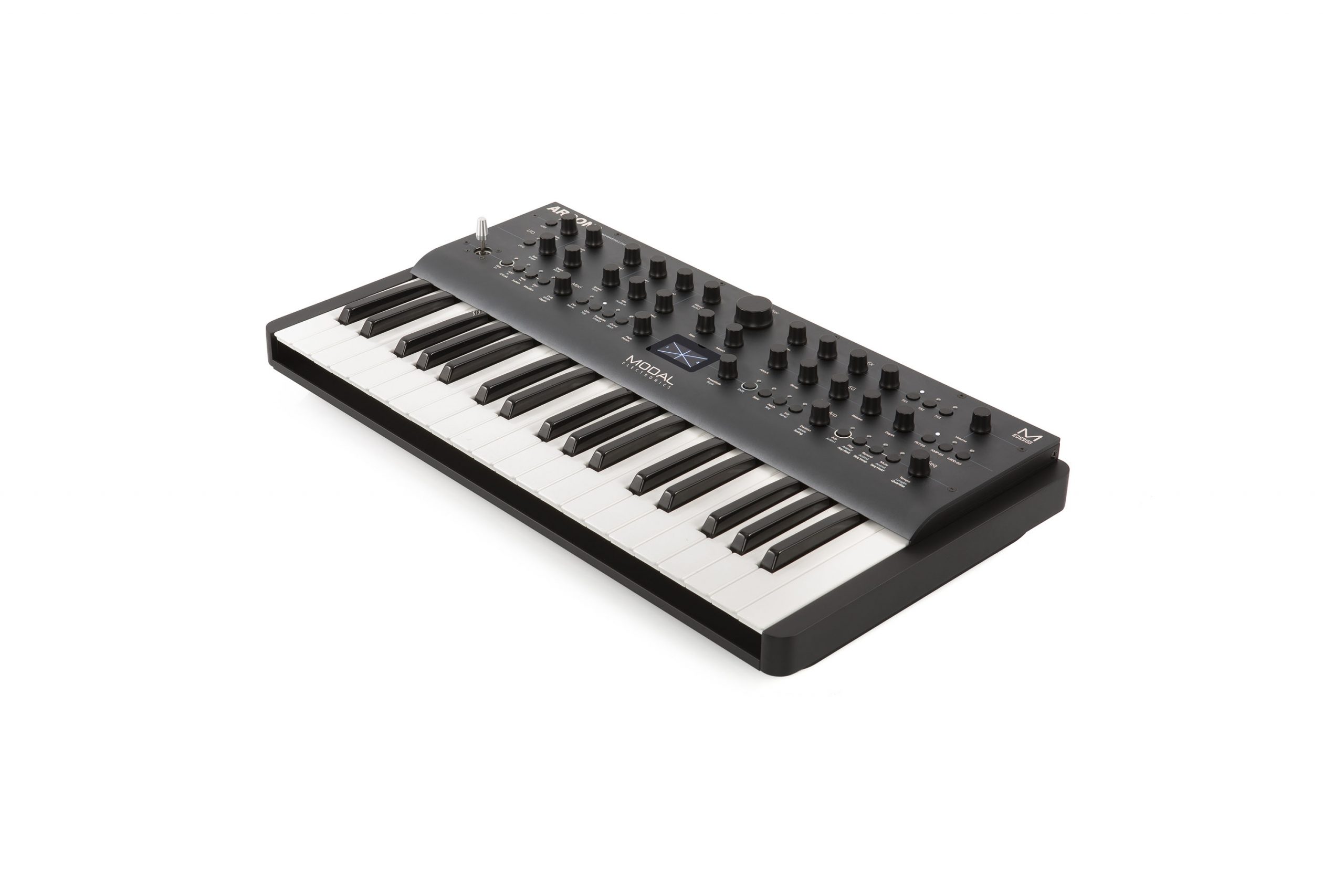
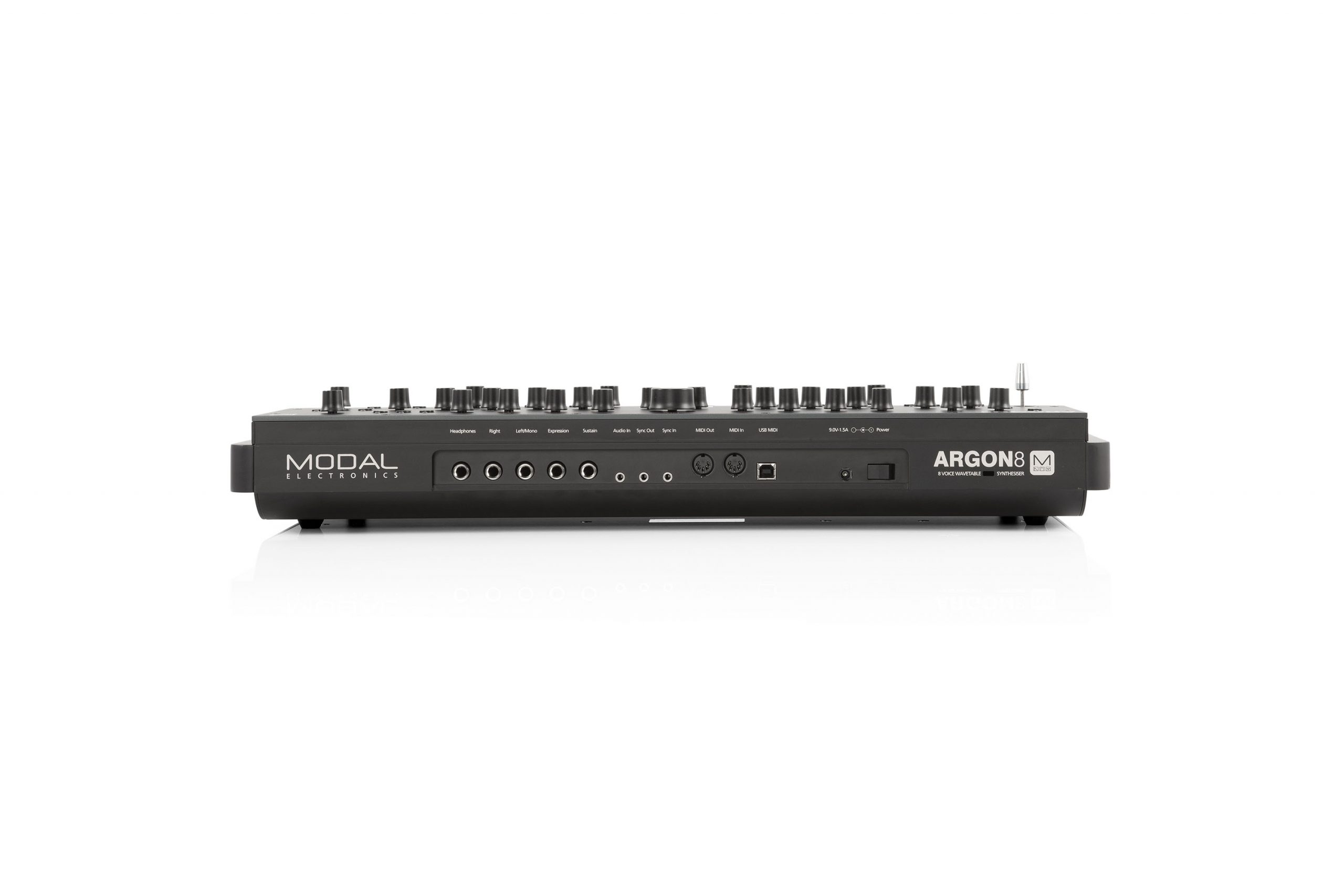
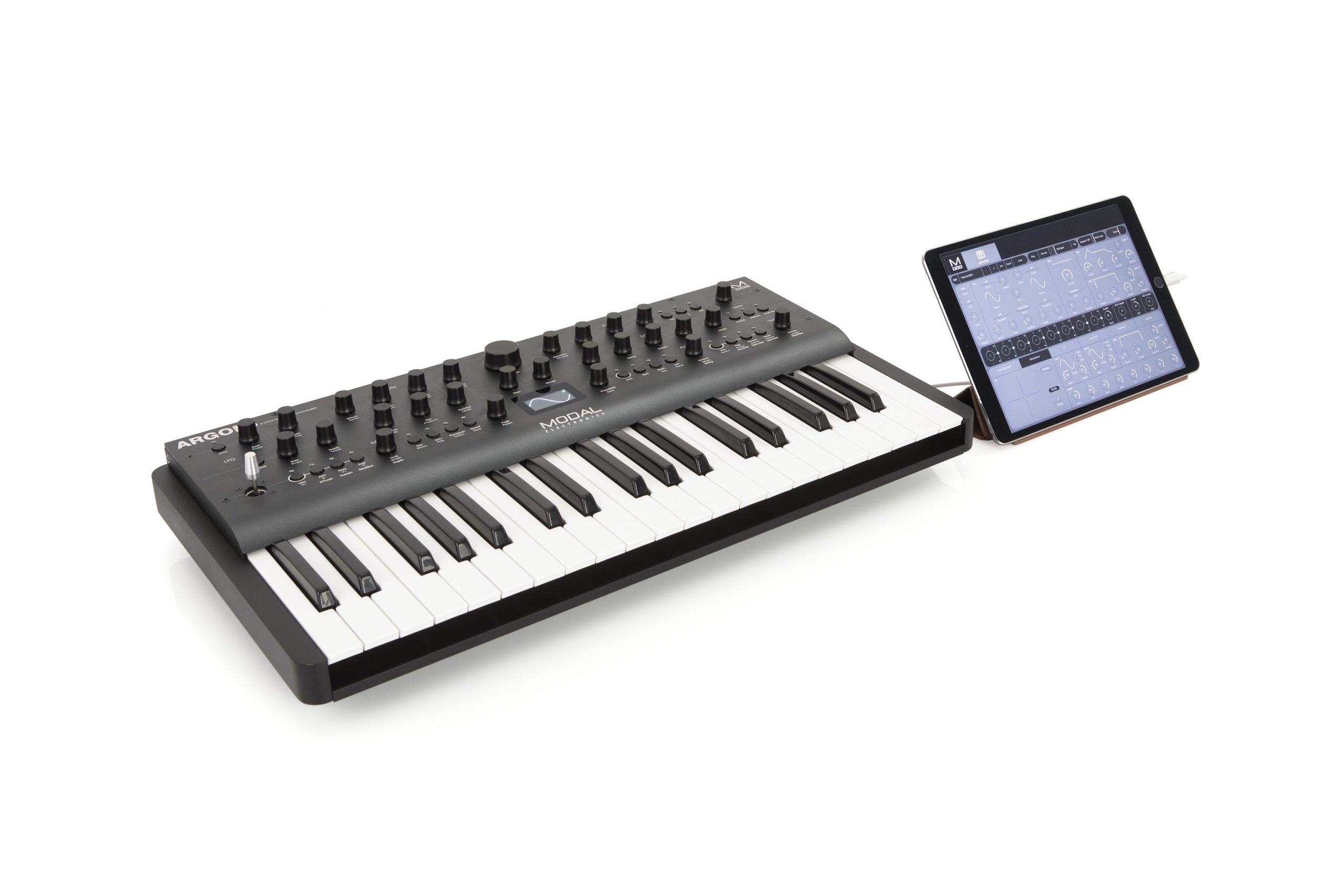
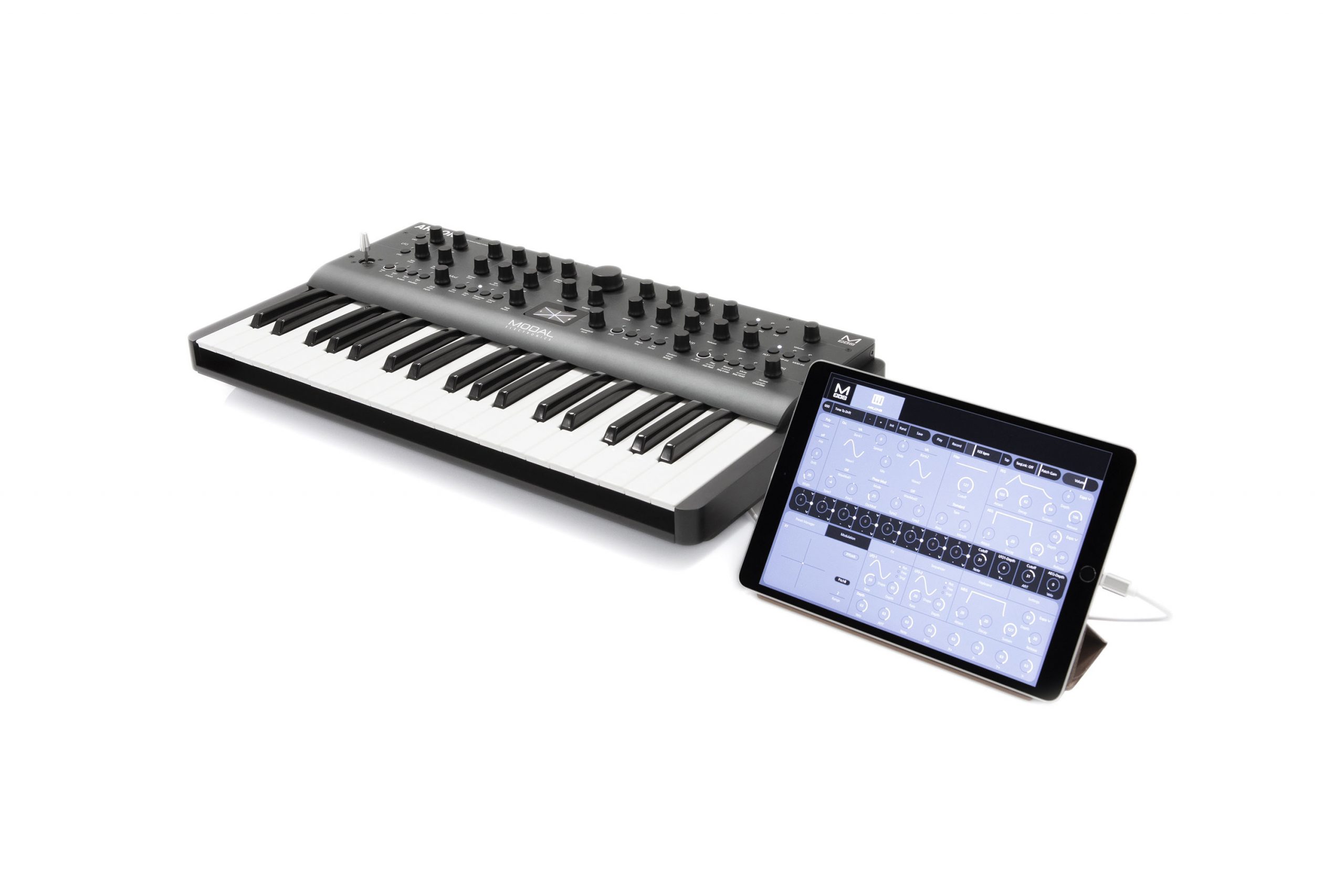
Einzigartige Wavetable-Sounds für breite Flächen, fette Soloklänge, dynamische Klanglandschaften und markerschütternde Bässe.
Kreiere Deinen eigenen Sound mithilfe morphbarer Wellenformen, eines virtuell analogen, ebenfalls morphbaren Filters, einer umfassenden Modulationsmatrix und flexibler Digital-Effekte.
Bring Deine Performances auf das nächste Level - mit MPE-Unterstützung, einem 512-Noten Echtzeit-/Step-Sequencer, dem programmierbaren 32-Schritt-Arpeggiator und vielseitigen Automationsmöglichkeiten.
Tastatur mit 37 Tasten und Aftertouch in einem roadtauglichen Aluminiumgehäuse.
Der ARGON8 Wavetable-Synthesiser bietet MIDI-Anschlüsse in Normalgröße sowie einen analogen Sync-Ein- und Ausgang (3,5mm).
Zugriff auf alle Synthesiser-Funktionen und ARGON8-Updates mit der kostenlosen MODALapp für macOS, Windows, iOS, iPadOS, Android sowie in den Plug-In-Formaten AU/VST3.

Demos
Videos


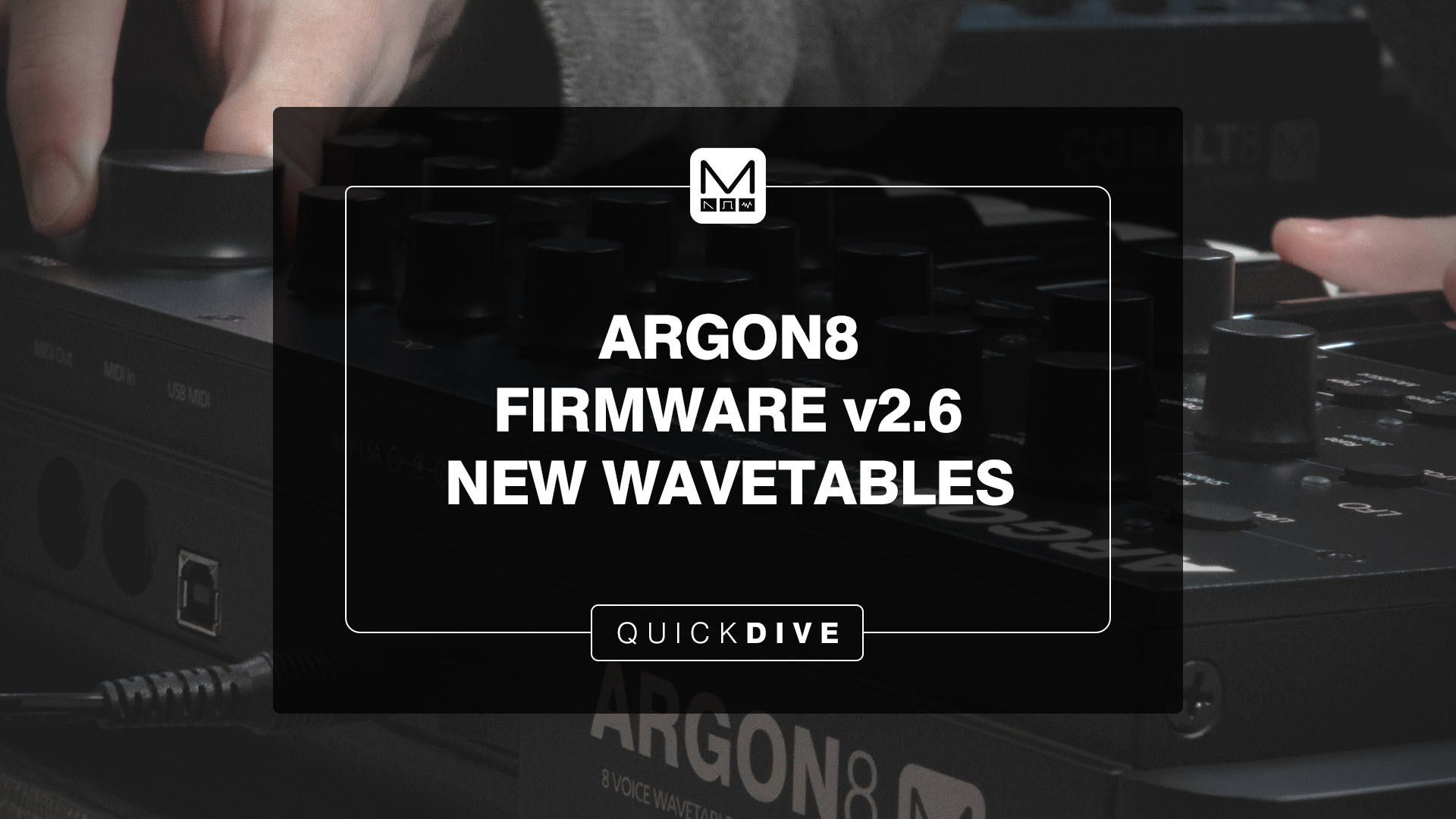

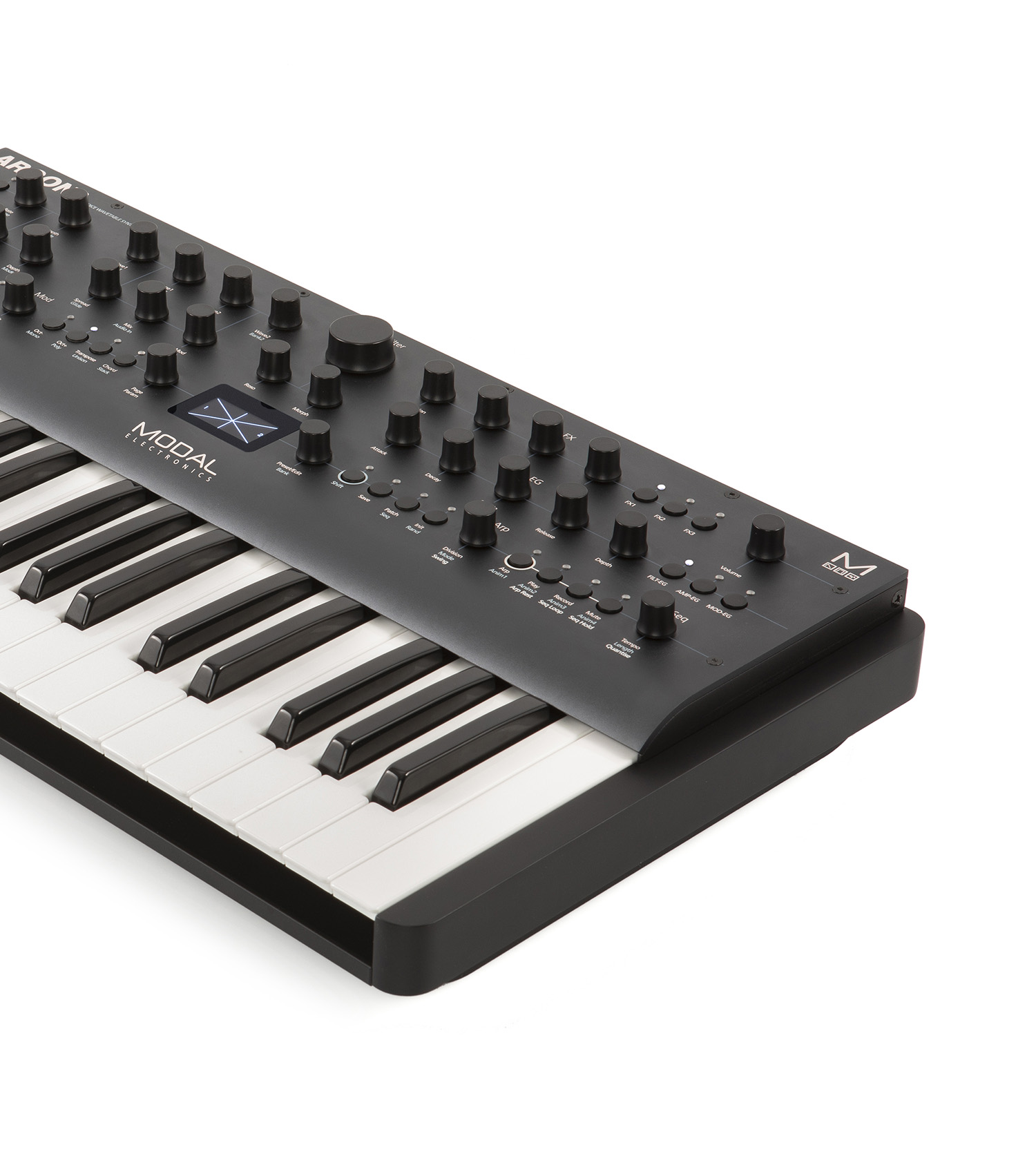
Wellenformen bis zum Abwinken
Die hochentwickelte Wavetable-Engine des ARGON8 erzeugt durch ihr nahtloses Morphen zwischen Wellenformen abertausende unterschiedliche Klangkombinationen. Erforsche sich langsam entwickelnde Ambient-Strukturen, klassische Pads und moderne Stabs, markerschütternde Bässe, dunkle Drones und psychedelische Klanggebilde – ARGON8 ist ein wahrer Spielplatz für Sounddesigner.
Verändere und moduliere die Wellenformen mithilfe der 32 statischen Wavetable Modifier und greife so auf zusätzliche Wavetable-Variationen zu. Die „Vintage“- und „Oscillator Free Run“-Paramater erlauben es, die organischen Strukturen der Wavetables zu verändern, indem sie das typische Verhalten klassischer Vintage-Synthesiser emulieren. Auf diese Weise klingen digitale Wavetable-Patches sprichwörtlich im Handumdrehen analoger als je zuvor. Mit ARGON8 lässt sich nahezu jede erdenkliche Soundvorstellung zum Leben erwecken.
Synthese hoch acht
Acht morphbare Filtertypen bieten zeitgemäße wie klassische Optionen, um Deine Sounds in jede erdenkliche Richtung hin zu formen. Mit gleich mehreren 2-Pol- und 4-Pol-Filter-Varianten lassen sich sowohl drastische als auch subtile Änderungen am Klang der Wavetables vornehmen. Zwei flexible LFOs, die bis in den Audiobereich reichen (einer davon sogar polyphon), lassen sich über die Modulationsmatrix einer riesigen Auswahl an Zielen zuordnen und zu einem internen oder externen Tempo synchronisieren. Drei dedizierte Hüllkurven für Filter, Amp und Modulationen liefern tiefgehende Kontrolle über Dynamik und Ausdruck. Die ausgeklügelte 12-Slot-Modulationsmatrix von ARGON8 erlaubt einfache Zuweisungen komplexer Modulationsroutings, mit denen sich der Klang ständig weiter entwickeln kann. Vier gängige Modulationsroutings sind bereits vorbereitet, um mehr Freiraum für interessante Ideen zu schaffen.
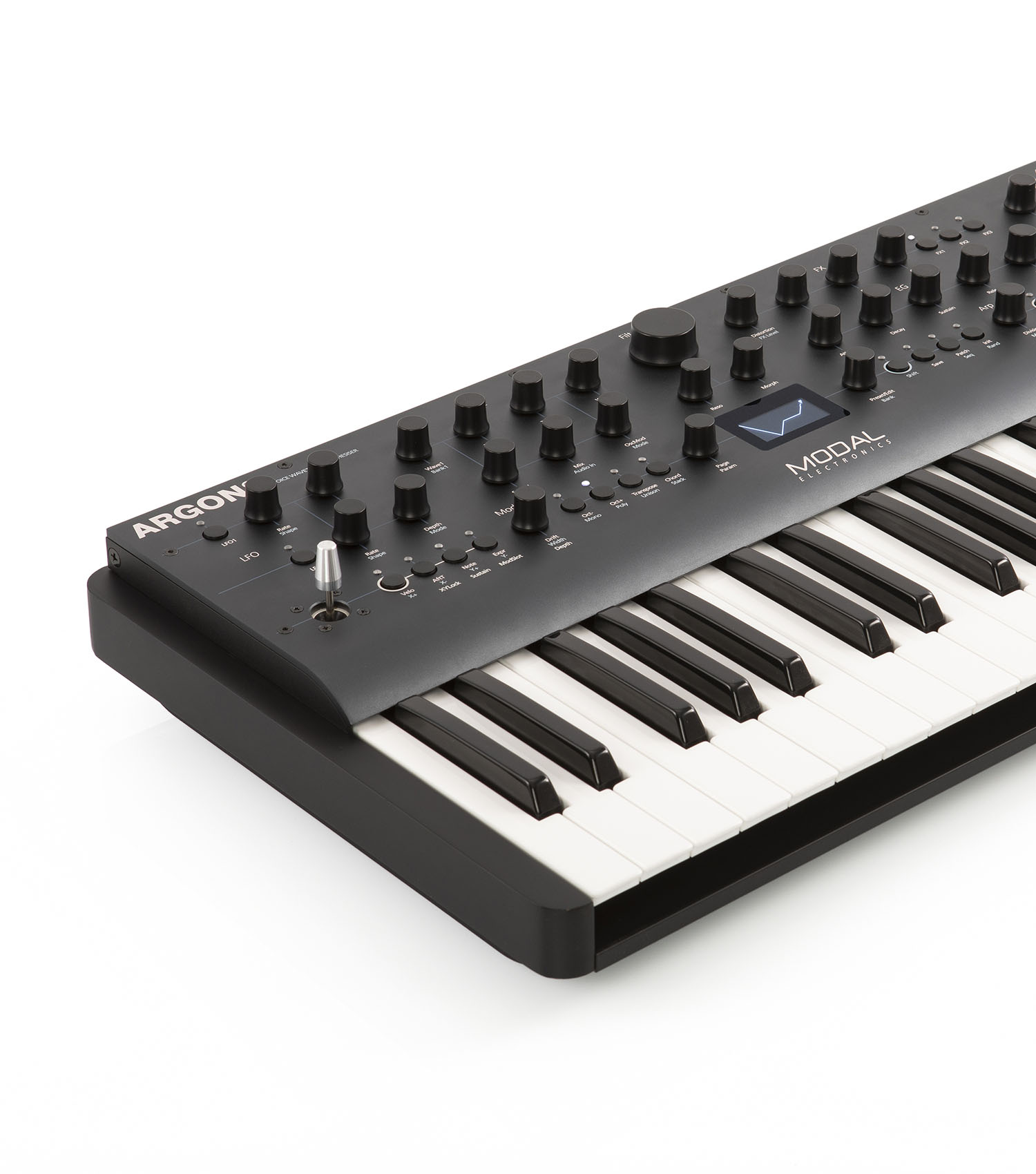
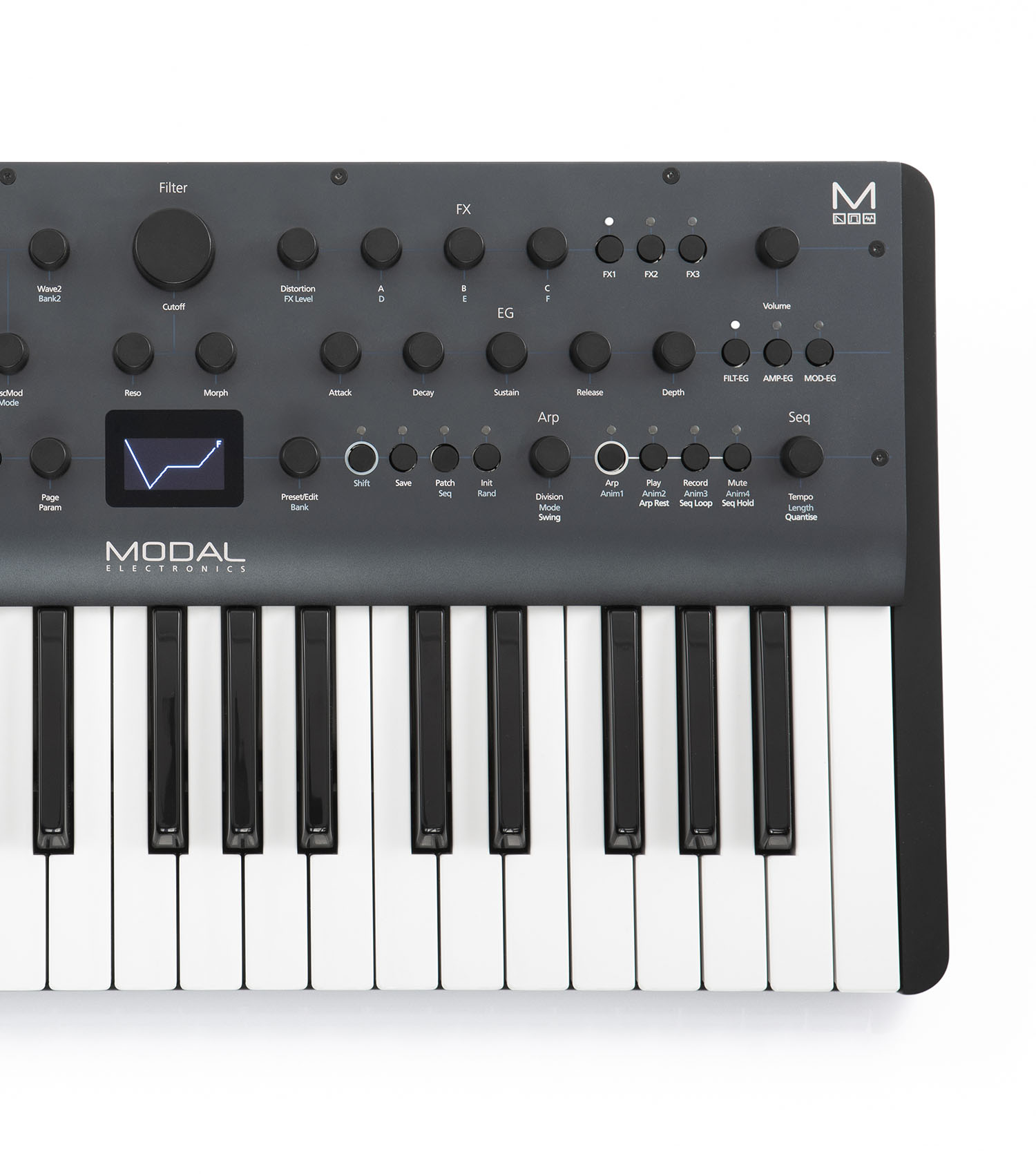
Bring Bewegung in’s Spiel
Der 512-Noten Echtzeit-/Step-Sequencer mit 4 leistungsstarken Animations-Spuren sorgt auf Wunsch für radikale und komplexe Klangfarbenvariationen, die sich mit einem LFO oder einer Hüllkurve alleine so nicht erzielen lassen. Der polyphone Step-Sequencer mit 64 Noten erleichtert die Eingabe von Noten- und Animationswerten für melodische Patterns.
Mehrere Triggermodi für den Sequencer, ein leistungsfähiger Arpeggiator (32 programmierbare Schritte) sowie Spielfunktionen wie „Chord Hold“, „Inversions“, „Transpose“, „Sustain Latch“ und der Joystick machen den ARGON8 zu einem echten Performance-Instrument.
Spüre den Sound
Dass sich der ARGON8 an kompromisslose Künstler richtet, geht schon allein aus dem robusten Stahl/Aluminium-Gehäuse und der 37er FATAR TP/9S-Tastatur in Standardgröße hervor. Die Tastatur bietet Kanal-Aftertouch und reagiert ausgesprochen präzise auf das Spiel. Der ARGON8 besitzt 29 Endlos-Regler, 24 Taster und einen X/Y-Joystick für Pitch Bend und Modulationen.
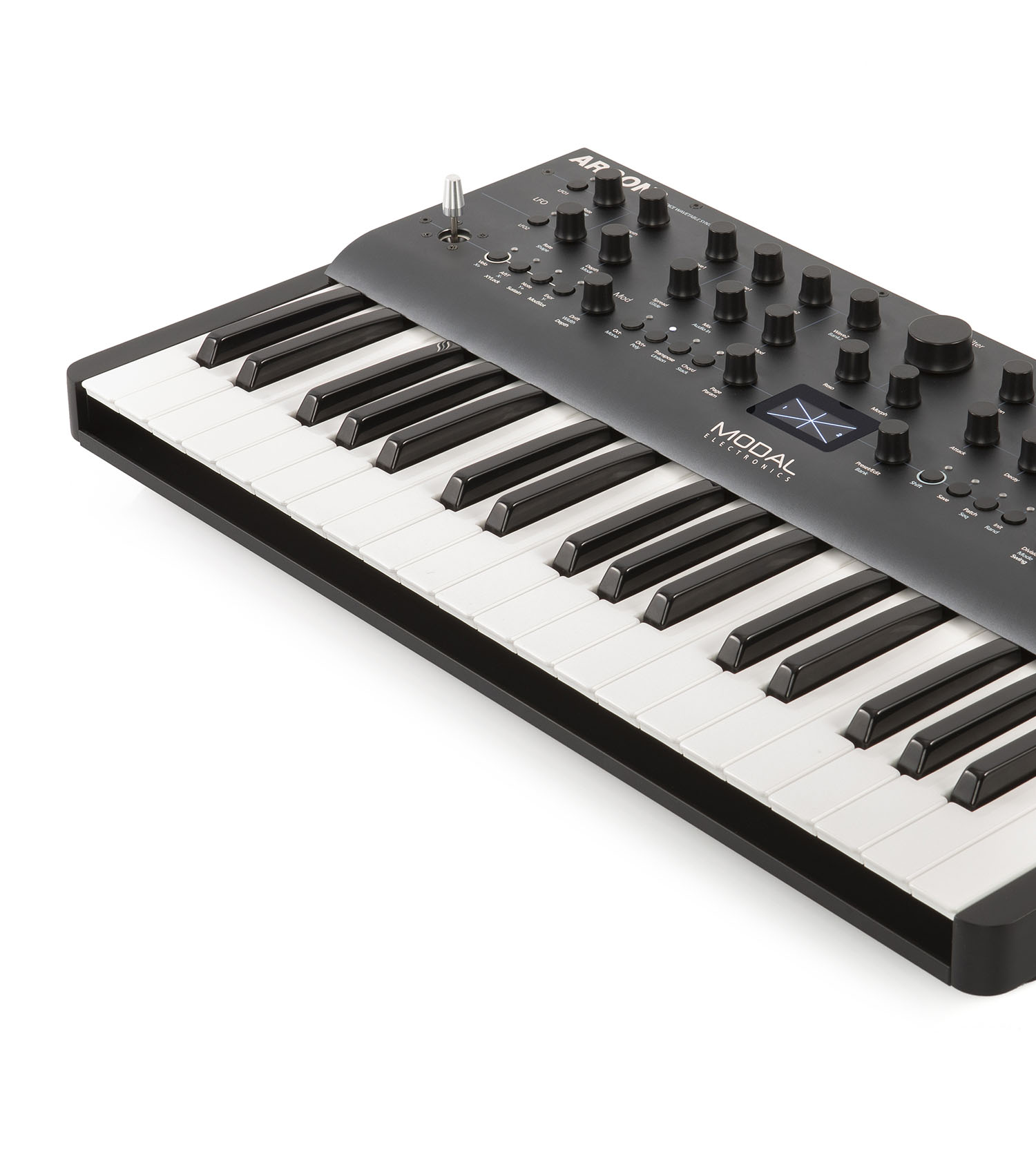

Extrem effektiv
Bearbeite Deine Sounds von Grunde auf mit der integrierten Stereo-Effekt-Engine. Die Effektsektion des ARGON8 bietet 3 Slots und lässt sich detailliert programmieren. Wähle aus insgesamt 27 Effektalgorithmen aus, um Deinem Sound Charakter und Tiefe zu verleihen, darunter Distortion, Drive, verschiedene Chorus- und Phaser-Varianten, Flanger (positiv), Flanger (negativ), Tremolo, LoFi, Rotary, Stereo Delay, Ping-Pong Delay, X-Over-Delay sowie mehrere dichte und weite Reverbs.
Perfekt vernetzt
Dank aller notwendigen Anschlüsse fügt sich der ARGON8 perfekt in jedes Setup ein. So kann er via USB angesteuert werden, bietet einen Kopfhöreranschluss und separate Line-Ausgänge, MIDI IN- und OUT-Buchsen in DIN-Größe für die Kommunikation mit anderen Geräten, Sync-In- und Out-Buchsen (3,5mm) sowie Anschlüsse für jeweils ein Sustain- und ein Expression-Pedal. Wer sich wahrhaft umwerfende Sounds wünscht, kann zwei ARGON8 Geräte im Polychain-Modus miteinander verketten, um so über 16 Polyphoniestimmen und 64 Oszillatoren zu verfügen.


Pressestimmen
Sonicstate – „Ein Instrument mit Charakter, bei dem man die Zeit vergisst.“
Professional Audio Magazine – „…So viele Möglichkeiten in puncto Hard- und Software, Spielhilfen und Effekten gab es noch nie.“
Bonedo.de – „Ein intuitives Instrument mit einem unverkennbaren Sound und Premium-Hardware, das trotzdem nicht die Welt kostet.“
Audiostaja – „Wer zeitgenössische Sounds sucht, um seine Klangpalette aufzufrischen, ist mit diesem Instrument bestens beraten.“
Future Music Magazine – „Endlich mal wieder ein Synthesiser, für dessen Erkundung man Jahre brauchen wird!“
Amazona.de – „Unfassbare Möglichkeiten mit Wavetable-Oszillatoren, die beliebig viele Optionen bieten.“
Kostenlose MODALapp
für intuitive Sound-Programmierung
Die kostenlose MODALapp erlaubt die komfortable Sound-Programmierung am Computer oder mit einem Mobilgerät. Verfügbar als Standalone-App für macOS, Windows, iOS, iPadOS und Android sowie als VST3- und AU-Plug-In, bildet sie die perfekte Ergänzung für das Instrument: Sounds und Sequenzen lassen sich bis in’s kleinste Detail am Bildschirm editieren und flexibel verwalten.

Technische Daten
Polyphonie
8-stimmig polyphon
MPE
Unterstützt MPE-fähige MIDI-Controller für die polyphone Steuerung und Beeinflussung einzelner Noten
Oszillatoren
32 hochauflösende Wavetable-Oszillatoren; bis zu 4 pro Stimme
180 hochkarätige Wavetables in 36 Bänken zu je 5 morphing-fähigen Wellenformgruppen. Zusätzliche PWM-Bank und 3 Rausch/Modulations-Bänke für Oszillator 2
32 statische Wavetable-Modifier mit u.a. De-Rez, Wave Folders, Waveshapers, Phase Shapers und Rectify; verfügbar für die 180 Wavetables für unendlich viele Variationen und neu kreierte Wellenformen.
8 Modifiertypen für die Oszillatoren, darunter Phase Mod (FM), Ring Mod, Amp Mod, Hard Sync und Windowed Sync
Voice Drift- und Width-Regler für ultrabreite Stereo-Klanglandschaften
Vintage Parameter und Oscillator Free Run zur Emulation des Verhaltens analoger Vintage-Synthesiser
Filter
Acht Filtertypen
Zwei „Standard“ Filter sind 2-Pol State Variable Filter, basierend auf dem resonanzfähigen Filter anderer Modal Synthesiser, die wie folgt gemorpht werden können: LP > BP > HP oder LP> Notch > HP
Zwei „Classic“ 2-Pol State Variable Filter mit runderem Charakter und weicherer Resonanz, die wie folgt gemorpht werden können: LP > BP > HP
„Ladder“ – Ein resonanzfähiges 4-Pol Ladder-Filter mit Pre-Filter Drive, das wie folgt gemorpht werden kann: LP > BP > HP
„Ladder Hybrid“ – Ein resonanzfähiges 1-Pol Ladder Filter mit Pre-Filter Drive, das wie folgt gemorpht werden kann: LP + Notch > Notch > HP + Notch
„Ladder Phaser“ – Resonanzfähiges Ladder-Filter mit Pre-Filter Drive, das wie folgt gemorpht werden kann: Notch > Phaser
„Sallen-Key“ – Ein resonanzfähiges 2-Pol Sallen-Key-Filter mit Pre-Filter Drive, das wie folgt gemorpht werden kann: LP > BP
Modulation
3 fest zugewiesene Hüllkurvengeneratoren für AMP, MOD und FILTER; separater oder simultaner Zugriff auf alle drei Hüllkurven; negative Funktionsweise (umgekehrt) und Optionen für mehrere Hüllkurven
2 LFOs mit Temposynchronisation (1x Poly, 1x Global). Der polyphone LFO kann zu Frequenzbereichen synchronisiert werden
8 zuweisbare Modulations-Slots und 4 zusätzliche Modulations-Routings für gemeinsame Zuordnungen von 11 Modulationsquellen und 52 Zielen
Sequencer und Arpeggiator
Polyphoner Echtzeit-Sequencer, 512 Noten und 4 aufnehmbare/editierbare Parameter-Animationen (Delay-Effekte, LFOs, Sequencer und Arpeggiator können wahlweise intern oder extern synchronisiert werden)
Polyphoner Step-Sequencer, 64 Schritte, 8 Noten je Schritt, 4 Animationsspuren, Step-Eingabemodus, mehrere Wiedergabemodi mit Gate-Variationen und Pausen
Programmierbarer Arpeggiator, 32 Schritte mit Pausenmöglichkeit, bis zu 2048 Schritte vor der ersten Wiederholung
Effekte
Waveshaping Distortion
Drei unglaublich mächtige, unabhängige und konfigurierbare Stereo-Effekt-Engines mit insgesamt 26 Effekt-Algorithmen, darunter Drive, Chorus, Phaser, Flanger, Tremolo, LoFi, Rotary, Stereo Delay, Ping-Pong Delay, X-Over Delay und Reverb.
User-Speicher
500 Sounds, umfassend editierbar, 300 Werks-Sounds
100 Sequencer-Presets, die mit jedem beliebigen Sound verknüpft werden können
100 Effekt-Presets
8 Quick Recall-Speicher für ein schnelles Laden der bevorzugten Sounds
Bedienelemente und Spielfunktionen
Hochwertige, anschlagdynamische 37er-Tastatur von FATAR mit Kanal-Aftertouch
29 Endlos-Regler, 24 Taster
4-Achsen-Joystick für unzählige Modulationsziele, virtuell verriegelbar
Tastaturmodi: Mono, Poly, Unison 2, Unison 4, Unison 8, Stack 2 und Stack 4
Glide/Portamento mit Legato- und Staccato-Modus
Chord Invert-Regler für die schnelle Erzeugung von Akkordumkehrungen und -variationen
Ein- und Ausgänge
2 x Mono-Ausgänge (6,35 mm Klinke), Line-Pegel
Kopfhöreranschluss (6,35 mm Klinke)
Audio-Eingang (3,5 mm, Miniklinke stereo)
MIDI-Ein- und Ausgang (DIN)
Analog Sync Ein- und Ausgang (3,5 mm Miniklinke)
MIDI–USB-Port (class compliant)
Expression-Pedalanschluss (6,35 mm Klinke)
Sustain-Pedalanschluss (6,35 mm Klinke)
Stromversorgung
Stromversorgung: DC 9V, 1,5A, negativer Innenleiter
Editorprogramm
Allgemein
Abmessungen (B x T x H): 555 x 300 x 100 mm
Gewicht: 5,60 kg
Sounds
Tipps & Tricks
Firmware
Firmware v3.2
Dein ARGON8 lässt sich ganz einfach über die kostenlose MODALapp updaten.
Features:
- Added a “Cutoff Scaling” patch parameter for improved filter cutoff behaviour with the following modes:
- Legacy – The existing cutoff control scaling curve and note-to-cutoff tracking behaviour
- Relative – A new cutoff control scaling curve that is more balanced and changes the note-to-cutoff tracking to behave more closely to analogue synths. In this mode note-to-cutoff tracks best when the cutoff control is at 0, and tracks portamento / glide and pitch bend.
- Bipolar – The same cutoff control scaling curve and portamento / glide / pitch bend tracking behaviour as the ‘Relative’ mode, except in this mode note-to-cutoff tracks best when the cutoff control is at 64.
Improvements:
- Added a panel shortcut for the Osc Free Run parameter – hold the ‘Patch’ button and turn the Osc2 Tune control (the ‘Tune2/Fine2’ encoder on ARGON8 and ARGON8X, or the ’Tune/Fine’ encoder on ARGON8M).
Fixes:
- Fixed an arpeggiator delay / latency issue introduced in version 3.0
- Fixed arpeggiator hanging notes issues potentially seen when using long divisions and gate lengths
- Fixed an arpeggiator chord mode issue where pressed notes may not all be added to the arp straight away
- Fixed very rare crash when sending certain tempo values from external MIDI
Features:
- Added 15 new FX including a new reverb algorithm:
- Reverb V2
- Phaser V2
- Chorus V2
- Unisoniser
- Compressor
- Three Band EQ
- Mono Drive (Hard Clip)
- Mono Drive (Soft Clip)
- Mono Drive (Rectify)
- Mono Drive (Fold)
- Stereo Drive (Hard Clip)
- Stereo Drive (Soft Clip)
- Stereo Drive (Rectify)
- Stereo Drive (Fold)
- Utility
- 4 New Filter Types: Distortion control is used to control filter drive when these types are active.
- Ladder – 4 pole resonant ladder filter with pre-filter drive, morphing through: LP > BP > HP
- Ladder Hybrid – 1 pole resonant ladder filter with pre-filter drive, morphing through: LP + Notch > Notch > HP + Notch
- Ladder Phaser – Resonant ladder filter with pre-filter drive, morphing through: Notch > Phaser
- Sallen-Key – 2 pole resonant Sallen-Key Filter with pre-filter drive, morphing through: LP > BP
- Vintage Parameter – Emulating the behaviour of vintage synths by introducing variation between the voices
- Osc Free Run – Emulating the behaviour of analogue oscillators by allowing them to run freely
- 7 new arpeggiator directions:
- Chord
- Pendulum 2 – Repeats the last note when reversing direction
- N-Pendulum 2 – Pendulum 2 in note number order
- Reverse Pendulum – A reverse version of Pendulum
- N-Reverse Pendulum – A reverse version of N-Pendulum
- Reverse Pendulum 2 – A reverse version of Pendulum 2
- N-Reverse Pendulum 2 – A reverse version of N-Pendulum 2
Improvements:
- Improved internal gain staging for increased output volume in most cases
- Improved the screen’s osc parameter pages / waveform display in the following ways:
- The waveform display now has the selected WavMod processor applied to it
- The Wave, Bank and WavMod parameter pages now display both the waveform and text value
- Improved the screen’s filter graph / parameter pages in the following ways:
- Improved the graph to be a more accurate representation of the filter
- The Type parameter page now displays both the graph and text value
- Improved Audio In sound quality
Fixes:
- Fixed a potential arpeggiator note ordering issue when playing arps with an arp octave value of 2 or more
- Fixed a potential arpeggiator note ordering issue when playing arp patterns using a pendulum direction mode
- Fixed issue where the first loop of the arpeggiator sequence may not contain all pressed notes when using the ‘backwards’ direction mode
- Fixed issue wheres some parameters would not be properly forwarded in polychain mode
- Fixed an aftertouch to cutoff modulation scaling issue for classic filters
- Fixed an FEG depth scaling issue
- Fixed bug in polychain mode where DIN Thru could still be active on polychain slaves, leading to undefined behaviour.
Features:
- Added 12 new Wavetable Banks (60 new waveforms)
- Added OSC2 Tune Mode control which allows OSC2 tuning to be linked to OSC1 frequency
Fixes:
- Fixed Tempo Synced LFO2 Rate mod assignment scaling
- Fixed edge case DSP usage issues
- Fixed modulation destinations not being cleared when setting a mod dest to ‘-‘ in the app or on screen
Fixes:
- Fixed an issue that could cause LFO2 rate to be recalled incorrectly in some cases
- Fixed issue where assigning modulation to PWM bank shape could cause audio glitches
- Fixed sequencer names falling out of sync with the app in some cases
Features:
- Added more LFO synced divisions
- Added Extended Oscillator Drift to upper range of Drift control. Rescaled patches accordingly.
- Added ‘Master’ Clock Source mode that always sends out MIDI clock
Improvements:
- Updated factory sound-set
- Improved MIDI reliability on macOS Big Sur
- Improved arpeggiator sync when working with external sequencers
- Improved expression pedal behaviour
- Improved LFO1 sync when clocked from external MIDI
Fixes:
- Fixed an issue that could cause Unison-8 levels to be inconsistent
- Fixed issue where an external CC 0 (bank) message would cause the screen to switch to the ‘play’ page, if screen switching is enabled for external MIDI messages.
- Fixed negative LFO1 Rate mod assignments increasing LFO speed
- Fixed an edge case when loading a step sequence with 0 steps
- Fixed Y+ to LFO1 assignment not always working as expected
- Fixed negative modulation of LFO1 rate increasing the rate in some cases
- Fixed app sync of XY lock parameter
Features:
- Preset Auto Load Setting – Enable this setting (found in ‘Settings – General’ on the screen) to load patches, sequences and FX presets by scrolling and ‘hovering’ on a preset – no click required.
Improvements:
- Improved the behaviour and response of the two screen encoders
- Improved the ‘Glide’ parameter on screen to show when in ‘Auto Glide’ mode compared to ‘Legato’ mode
- Improved the behaviour of the screen encoder when controlling synced delay times or synced LFO rates so that it increments in the same direction as the dedicated panel controls.
- Improved interaction between Step Sequence Gate and Step Edit modes
- Improved sustain pedal behaviour (prevented potential double triggering of sustain messages)
- Improved the stream of MIDI messages from the joystick X axis when ‘Joystick Pitch Bend Out’ is disabled
Fixes:
- Fixes for freezes when connected to an external device through USB
- Fixed issue where a negative MEG Depth could cause issues with FX3
- Fixed issue where chord invert wasn’t being saved to patches
- Fixed issue where the ‘Joystick Mod Wheel Out’ setting couldn’t be disabled
- Fixed issue on ARGON8M where the joystick axis calibration settings would control the incorrect axes (e.g. the X+ setting would calibrate X-, the Y+ setting would calibrate Y-)
- Fixed issue where the onset / attack of MPE notes may randomly sound incorrect
- Fixed issue where changing the ‘Keyboard Local’ setting value would incorrectly change the displayed ‘Arp/Seq Out’ setting value on the screen
- Fixed issue where a burst of aftertouch messages was being sent to the MIDI DIN out on boot
- Fixed potential issue with setting animator parameters from the app
- Fixed issue where the screen control for the osc ‘Tune’ parameters wasn’t incrementing correctly
- Fixed hanging notes issue when in MONO mode with the clock source set to MIDI but with no external MIDI clock present
- Fixed issue where it was possible to crash the synth by sending it a large number of MIDI notes whilst renaming or confirming a preset save from the screen
- Fixed issue where it wasn’t possible to hold the MOD EG button to momentarily perform mod assignments
- Corrected synced LFO rates text on the screen
- Fixed issue where the screen control for the LFO rate parameters weren’t incrementing correctly with synced rates or frequency division rates
- Fixed issues with the LFO2 rate encoder behaviour on ARGON8M
Improvements:
- Improved Audio In quality, volume and interaction with v2.0 gain structure
- Improved stability in MIDI loop situations
- Reduced envelope clicking
- The ‘Randomise Patch’ function now uses a SysEx message instead of CC 121. CC 121 (‘Reset All Controllers’) has been implemented as per the MIDI specification – resets control values for mod wheel, expression pedal, sustain pedal, aftertouch and pitch bend. This improves compatibility with external MIDI software / hardware that transmits CC 121 for its intended purpose.
- Randomising the patch from MODALapp now shows an alert on the screen (like when randomising the patch from the panel).
Fixes:
- Fixed issue introduced in v2.0 where feedback for ping-pong and x-over delay types was too high
- Fixed issue where assigning a mod slot with a MIDI loop present would create an infinite stream of MIDI messages
- Fixed issues where LFO1 synced rate wouldn’t update when falling back from external clock source to internal
- Fixed issue where changing patches when the sequencer is running could cause incorrect patch values
- Fixed case where sequencer gate transpose offset wasn’t reset when loading another sequence
- Fixed issue where it was possible to start step sequences containing no steps from MODALapp
- Fixed issue where receiving a MIDI stop message when recording in Step Sequencer mode could leave the synth in an incorrect recording state, causing issues such as ‘previewed’ steps (pressing the ‘Edit’ encoder in Step Edit mode) being added to the step sequence.
- Fixed issue where step sequence position LEDs would not clear when disabling recording from MODALapp
- Fixed issue where disabling sequence recording whilst in the pre-roll would leave the sequence in an incorrect playing state
- Fixed issue where enabling sequence recording from MODALapp wouldn’t show the pre-roll LED animation
- Fixed issue where enabling any of the MIDI DIN in or out filters could result in aftertouch from the DIN-in not being processed or aftertouch not being sent out of the DIN-out
- Fixed issue where some v2.0 features were not kept in sync when in polychain mode
- Fixed issue where channel aftertouch from any source wasn’t being forwarded to polychain slaves correctly
- Fixed issue where parameters that use MIDI CCs 32-63 may be completely ignored by the voice engine if sent directly after the parameter / CC numbered 32 less than it (e.g. CC#0 followed by CC#32), until another parameter / CC is sent.
- Fixed issue where arp and seq MIDI notes may be sent out on the wrong MIDI channel
- Fixed issue where randomising a patch wouldn’t display the ‘patch edited’ asterisk on the screen.
Other:
- New content for factory reset process (2.0 patches, 2.0 sequences, 2.0 FX presets)
Features:
- Envelope Types – 7 new envelope curves including longer envelopes
- Gain Boost setting for automatic output gain increase
- Polyphonic Step Sequencer
- 64 Steps with 8 notes per step and 4 lanes of animation
- Parameter-Lock Style animation with 1 value per step
- Step Input mode – sequence notes and animation one step at a time
- Step Sequence editing on screen and using MODALapp
- Multiple playback modes including gate modes
- Rest Function
- Input Quantise when in clock mode
- MPE Support – ARGON8 now supports MPE-compatible MIDI controllers, allowing you to apply polyphonic control and expression to individual notes
- Chord invert – easily create chord inversions and variations
- Delay Modes – adding cleaner delays and longer delay times
- Headphone Volume control – allowing finer control over headphone output levels
- Joystick Calibration Settings
Fixes:
- Fixed some animator parameters not updating on the panel when synth is not on MIDI channel 1
- Fixed ‘boot error’ occasionally seen when powering on the synth or after an update
- Fixed issue where switching clock source when no MIDI clock is being received would cause internal clock to double or half in speed
- ‘Inactive’ (crossed-out) screen params are no longer controllable from the screen controls
- Fixed issue where turning the right screen encoder whilst a screen alert box is being displayed may cause incorrect MIDI messages to be sent out
- Fixed issue where assigning modulation to envelope parameters could change the value slightly at 0 depth
- Fixed LED glitch when holding the sustain button
- Fixed issue where loading patches with linked sequences may have incorrect patch data values depending on the sequence animation lane parameters
- Patch editing asterisk no longer appears when stopping the sequence
- Fixed issue where sequencer hold and loop functions could be performed when sequence isn’t running
- Fixed issue where saving a patch / sequence / FX preset into a new slot from MODALapp would result in the synth being out of sync in regards to the loaded preset number
- Fixed issue where the modulation ‘Depth’ front panel control wouldn’t always work as intended
- Fixed issue where initialising a sequence from the screen control wouldn’t put the sequencer into the correct state
- Fixed issue where pressing the Play button would occasionally cause random LEDs to flicker
- Y+ to LFO depth screen param now specifies it’s LFO1
- Fixed issue where screen would sometimes display incorrect FX values after loading an FX preset
- Pressing ‘ModSlot’ whilst in a ‘Smart’ Screen Switch mode will now result in the screen staying on the mod slot page
Improvements:
- Improved audio quality and lowered noise floor
- Increased range of Patch Gain control to help balance quieter patches
- Animation lane parameters now editable on screen
- Improved the location of the Delay Sync parameter on the screen so that it is now on the page of the FX slot that contains a Delay FX
- Split settings page on screen into 4 separate pages (MIDI, UI & Controls, Sequencer, General) to improve screen navigation
- Renamed ‘Chord’ parameter to ‘Chord Latch’ on the screen (to prevent confusion with the new Chord Invert parameter)
- Overhauled interaction between arp programming and sequencer recording (now mutually exclusive)
- Added ‘Choice / Confirm’ pages on the screen for Sequence Init, Polychain Master and Settings Reset
Features:
- Arp/Sustain Latch Mode – Press and release a note / chord to sustain it, press a new note / chord to overwrite the existing one. This functions as a classic arp hold that can also be used when the arp is off. Hold the ‘Sustain’ button for one second when turning on sustain to enable Sustain Latch Mode, turning off sustain will clear the latch mode.
- Polychain Implementation
- Added new global setting for allowing the keyboard octave parameter to also affect MIDI-in notes
- Support for ARGON8M models
- Added an on-screen MIDI monitor to help diagnose MIDI issues
- Added some new aftertouch curves
Fixes:
- Fixed bug where disabling sustain whilst holding notes in the arpeggiator would remove all notes and not just the sustained notes
- Fixed issue where the screen would sometimes incorrectly display the modulation assign ‘latched’ alert box
- Fixed issue where the ‘Edit’ encoder / switch wouldn’t work correctly when controlling the Mod Slot Status parameters
- Fixed issue where it was possible to get hanging arp notes when creating arp patterns
- Fixed potential note hang in sequencer when using arp and note input quantise.
- Fixed some edge cases with sequencer note recording
Improvements:
Improved the patch randomisation algorithm
Software-Editor
Die kostenlose MODALapp erlaubt die komfortable Sound-Programmierung am Computer oder mit einem Mobilgerät. Verfügbar als Standalone-App für macOS, Windows, iOS, iPadOS und Android sowie als VST3- und AU-Plug-In, bildet sie die perfekte Ergänzung für das Instrument: Sounds und Sequenzen lassen sich bis in’s kleinste Detail am Bildschirm editieren und flexibel verwalten.


